
BRYN DONOVAN

tell your stories, love your life
- Writing Inspiration
- Semi-Charmed Life
- Reading & Research
- Works In Progress.
Master List for Describing Weather
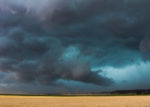
A lot of writers struggle with describing settings. I’ve written before about how to describe settings and why it matters , but a few people have told me they’d like me to do some of my master lists for writers to help them out!
I have a weird love for creating lists like this, so I’m happy to do it. “How to describe weather” seemed like a good place to start. This way, you won’t get stuck trying to figure out how to describe nice weather, or thinking up ways to describe rain. Hopefully, this will make your writing go faster.
I always include simple as well as more creative ways to describe or write about weather. Sometimes, the simple word is the one you want! I included dryness and humidity in a few of the categories because it felt weird for them to get their own.
As always, this is not a comprehensive list, and I might add to it. My list will probably make you think of other possibilities, too. Bookmark or pin it for future writing reference!
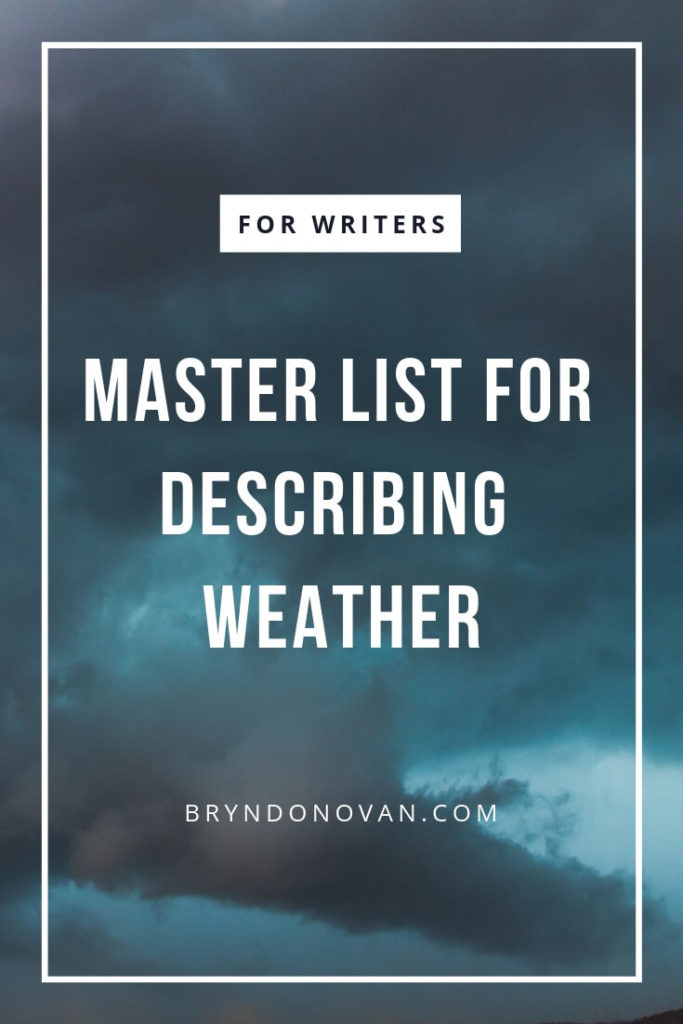
HOT WEATHER

blazing sunshine
glaring sun
baking in the sun
sun-drenched
scorching heat
extravagant heat
relentless sun
like a suana
dense tropical heat
radiating heat
blistering heat
oppressive heat
insufferable heat
suffocating heat
heat pressing down
searing sun
shimmering heat
like an oven
like a furnace
WARM / PLEASANT WEATHER

(“Pleasant” is a matter of opinion, of course.)
a beautiful day
a clear day
a temperate day
a golden day
a glorious day
heavenly weather
bright and sunny
a gorgeous spring day
a dazzling summer day
a brilliant autumn day
a vivid blue sky
a cloudless sky
fluffy white clouds
gentle sunshine
lazy sunshine
kind sunshine
filtered sunlight
dappled sunlight
welcome warmth
one of those rare, perfect days
the kind of day that made people forget to worry
the kind of day that lifted people’s moods
COOL WEATHER

refreshing air
stimulating cool air
invigorating cool air
bracing cool air
a nip in the air
a brisk day
a chilly day
weak sunshine
GRAY / OVERCAST WEATHER

(Most people don’t like gray days, so most of these descriptions are negative. I love them, so I had to add a few positive descriptions.)
colorless sky
a soft gray sky
a dove-gray sky
a gray day made for books and tea
steel-gray sky
granite sky
cement-gray sky
threatening clouds
foreboding clouds
COLD WEATHER

glacial air
bitter cold
brutal cold
bone-chilling cold
penetrating cold
devastating cold
numbing cold
punishing cold
dangerous cold
unforgiving cold
too cold to talk
so cold it burned one’s lungs
so cold it took one’s breath away

like a blast from a hair dryer
a gust of wind
insistent winds
heavy winds
strong winds
cutting wind
whipping winds
biting wind
wintry squall
violent gale
howling wind
shifting winds
restless wind
fresh breeze
soft breeze
balmy breeze
perfumed breeze
slight breeze
hint of a breeze
stirring breeze
wind rustling through the trees

fine drizzle
gray drizzle
pebbles of falling rain
spitting rain
stinging rain
steady rain
rain falling in torrents
cascades of rain
rain beating down
shower of rain
sheets of rain
hard-driving rain
pelting rain
lashing rain
slashing rain
THUNDER AND LIGHTNING

rumbling in the distance
a roll of distant thunder
crash of thunder
crackle of thunder
crack of thunder
clap of thunder
bang of thunder
booming thunder
rattled with thunder
earth-shaking thunder
tempestuous
a furious storm
flash of lightning
streaks of lightning
SNOW AND ICE
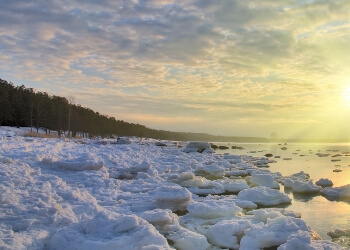
flurries of snow
dancing flakes
snowflakes floating down
snowflakes wafting down
swirling snow
falling thick and fast
big flakes falling like petals
blinding snowstorm
raging blizzard
sparkling expanses
blankets of white
caked with snow
boulders of snow
branches coated in ice
glittering ice
crystallized by frost
silvered with frost

clouds of mist
swirling mist
billowing fog
cloaked in mist
cocooned in fog
shrouded in fog
enveloped by fog
smothered by fog
made mysterious by fog
the fog rolled in
the fog was burning off
the fog was lifting
the fog was clearing
the fog was dissipating
I have many lists like this in my book Master Lists for Writers: Thesauruses, Plots, Character Traits, Names, and More . Check it out!
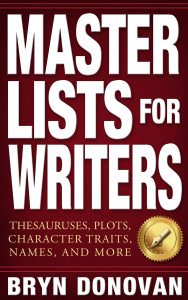
Do you describe weather conditions in your writing? Do you have a favorite example of a weather description? Let me know in the comments! Thanks for reading, and happy writing!
[spacer height=”20px”]
Related Posts
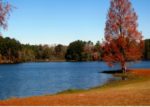
Share this:
21 thoughts on “ master list for describing weather ”.
In my current WIP, weather is a crucial element. Not only is the woman in the romance a professional photographer — of weather — but it is a weather phenomenon, namely a tornado, that brings them together. So the description of the sky and the weather is quite detailed in places (specially as the supercell storm roars down on them).
On another angle, the phrase “gloriously sunny” is one that despite having that horrible “ly” adverb (shudder) is so evocative of the type of weather and the POV character’s attitude (and possibly even the type of weather that has gone before), that it’s powerful. It says a huge amount with only two words.
Hi Chris! Oh, wow…that’s a lot more detailed than most of us ever get in writing about the weather. It sounds like a great premise!
I will need this list as I begin edits next month on my WIP. I currently live in Hawaii, but am writing a story at Christmas time in Vermont. 🙂 Thank you!
Aw, nice! That’s some very different weather from what you’re used to. 🙂
It really is! And traveling to the climate I need isn’t ideal right now. So, off to the freezer I go! 🙂
Wow! This is fantastic. Thanks. You ARE a master at this.
- Pingback: Master List for Describing Weather – Written By Bryn Donovan – Writer's Treasure Chest
This is comprehensive! It’s bookmarked for future use. Thanks!
Thanks, Steve, I’m glad you liked it!
Amazing list that goes beyond the words that I struggle with – especially describing the rain-painted setting of Snowdonia.
Love your lists. You don’t have one for beaches by any chance? Would this, including the weather be another book by any chance??
Hi, Nicole! It’s funny you should ask. 🙂 I am going to release a second, more expanded version of MASTER LISTS FOR WRITERS . It’s going to have several setting descriptions in there (including a whole list for beaches!), and the weather list will be in there, too! I’m hoping to get it done before November of this year, but we’ll see. Thanks for asking!
That’s awesome and look forward to it’s release.
- Pingback: ? Writing Links Round Up 7/1-7/5 – B. Shaun Smith
- Pingback: How to Write a Novel: Resources - MultiTalented Writers
- Pingback: ? Writing Links Round Up 8/19-8/23 – B. Shaun Smith
I am in Chinan. I happened to enter this web-link and want to learn more about writing, I wonder if there are any descriptive passages. I can only find some words and expressions…
That was really useful. Thank you!
- Pingback: The Power of Vision in Writing | Writers In The Storm
This list is fabulous. Thank you for sharing it. I will be consulting it when incorporating weather elements into writing my next picture book.
- Pingback: How’s The Weather In Your Story? – Writer's Treasure Chest
Leave a Reply Cancel reply
This site uses Akismet to reduce spam. Learn how your comment data is processed .
Discover more from BRYN DONOVAN
Subscribe now to keep reading and get access to the full archive.
Type your email…
Continue reading
Novlr is now writer-owned! Join us and shape the future of creative writing.
How to Write the Rain: Quick Tips for Creative Writers

Rain can evoke a range of emotions and associations, from the childlike joy of splashing in puddles to the melancholy of grey skies mirroring a character’s mood. But while we’ve all experienced stormy weather, capturing its essence on the page can be surprisingly tricky. Here are some tips to help you write about rain in a way that will make a splash with your readers:
How does it look?
- Use vivid adjectives to describe how the rain looks at different times of day and in different conditions.
- Mention the angle the rain is falling at. Is it falling straight down? Angled? or even sideways?
- Describe the size and shape of the raindrops – are they small and needle-like or large and heavy?
- Note if the rain is clear or if it’s tinged grey or yellow from pollution.
- Does the rain form puddles, streams, or mini-rivers as it flows?
- Describe any ripples, splashes, or concentric circles the rain makes when hitting surfaces.
How does it sound?
- Use onomatopoeia like “pitter-patter,” “tapping,” “drumming,” “plinking,” or “hissing” to mimic the sound.
- Show the surfaces the rain hits and how that changes the noise — a “clattering” on windows, a “thumping” on the roof, a “plopping” in puddles
- Describe the overall volume, from a soft “murmuring” or “whispering” to a loud “pounding” or “roaring”.
- Note any variations or patterns in the sound, like a steady drone vs. syncopated rhythms.
- How does the sound fill a space? Does it echo? Reverberate? Or is it dampened and muffled?
- Describe how the noise of the rain interacts with other ambient sounds in the scene.
How does it feel and smell?
- Describe the temperature of the rain and how it feels on the skin. Is it cool and refreshing or shockingly cold?
- Describe the tactile sensations, like wetness, dripping, soaking, or chilly dampness.
- Note how the rain changes the air, making it humid, misty, or heavy and saturated.
- Describe the smell of the rain, which can be clean and fresh, dusty, earthy, or laden with ozone.
- Describe how it feels to be out in the rain — are characters getting drenched to the bone or finding shelter?
- Use metaphors to compare the feeling to other sensations, like tears on the face or a massage.
What mood and atmosphere does it evoke?
- Use the rain to set the overall tone and mood you want to evoke, from gloomy and sad to peaceful and cleansing.
- Show how the rain affects the setting , like making colours more vivid or obscuring things with mist.
- Describe how the lighting changes, with skies darkening or a glistening sheen over everything.
- Describe how the rain makes characters feel emotionally as well as physically.
- Use the rain as a symbol or metaphor to mirror the characters’ mental states or the themes of the story.
- Show how the rain transforms the world, slowing things down or washing things away, and how characters react to that.
Positive story descriptions
- Rain can bring a sense of renewal, growth, and life to the world.
- There is a cosy feeling of being inside looking out at the rain, safe and warm.
- Rain can make everything glisten and gleam in the light, looking fresh and new.
- Show the soothing, hypnotic quality of the rhythmic patter of raindrops.
- Rain can be invigorating, energising, and joyful.
- Rain can symbolise a fresh start, washing away the old to begin a new chapter.
Negative story descriptions
- Rain can create a sense of melancholy, isolation, or loneliness
- Rain can be an obstacle or hindrance, slowing characters down or forcing them to change plans.
- There is a chilling, bone-deep cold that comes from being soaked in the rain.
- Describe the bleak, colourless world that seems to exist when the sky is endlessly grey and stormy.
- Show how the rain can feel oppressive, like a heavy weight pushing down on everything.
- Describe how the rain can make the world feel dreary, soggy, and depressing, sapping energy and vitality.
Helpful vocabulary
- Use words like deluge, downpour, torrent, cloudburst, hammering, lashing, pelting, battering, or thrumming to describe heavy, intense rain.
- Try terms like drizzle, mist, sprinkle, shower for lighter rain.
- Describe rain-soaked things as drenched, saturated, sodden, waterlogged.
- Describe how rain dimples or stipples surfaces.
- Gutters may babble, gush, trickle or overflow with rain.
- Puddles can slosh, ripple, or reflect like mirrors.
- Raindrops may bead up, roll, or slide down windows, leaves and other surfaces.
- Adjectives like windswept, blustery, driving, relentless, or unceasing can evoke a storm.
- The air may feel close, clammy, sticky, or muggy from humidity.
- Petrichor is the earthy scent released when rain falls on dry soil.
- Slickers, macs, wellies, brollies, and goloshes are rain gear that can add character details.
- After a storm, the world may seem scoured, quenched, drenched, or newly baptised.

Ready to achieve your writing goals? Join Novlr today.

How to describe rain: Descriptive words and adjectives for different types
There are many different types of rain, so it makes sense that we would have a lot of vocabulary to describe rain.
Here we’ll look at some wonderful descriptive words for rain, from adjectives to verbs to idioms. Get inspired to describe rain according to how it looks, sounds and smells, or just express in basic terms what the weather is like today.
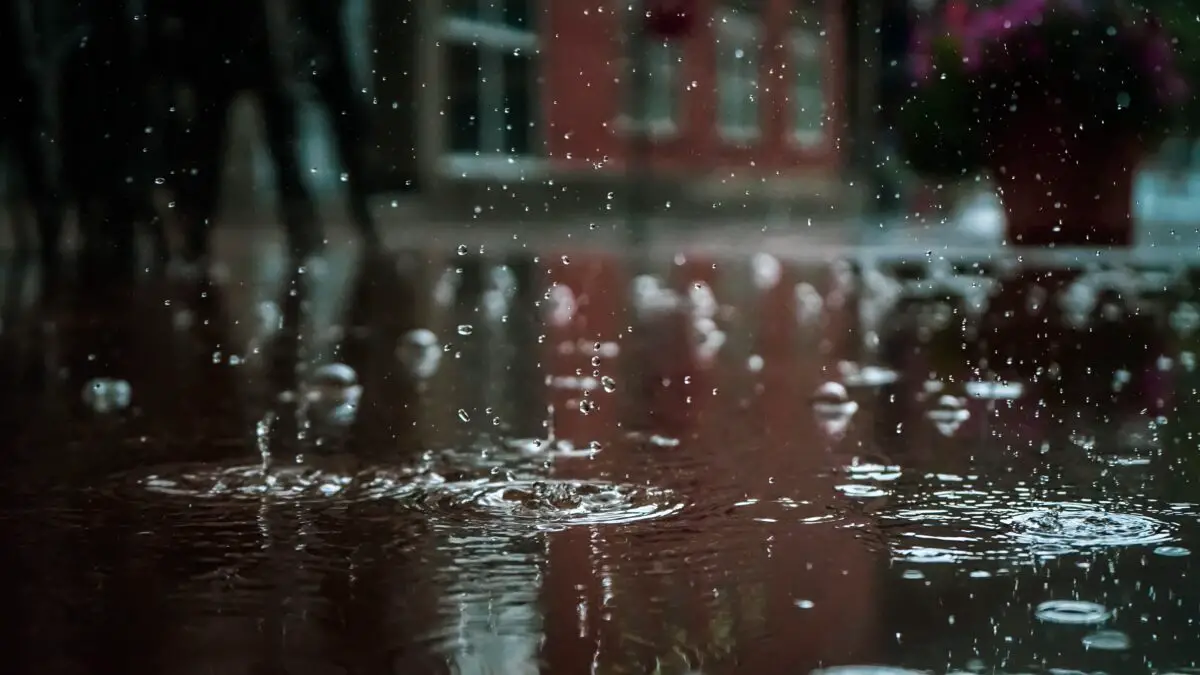
Words to describe rain
You may wish to describe rain in a very practical way. For example, if you are going outside in this weather, you need to know whether to take an umbrella, or perhaps consider catching a bus instead of walking.
See also: Whether vs if
However, there are other situations when you may need a more poetic way to describe rain, focusing not just on how much of it there is, but how it looks, smells or sounds.
So, we’re going to begin with some common idioms and phrases to describe rain in everyday conversation. Then, we will cover some more descriptive words for rain, for those who wish to explore other aspects of it.
How to describe rain falling
The following descriptive words for rain are grouped according to the type of rain that they describe, from light to heavy.
Describing light rain
Drizzle is a steady but very light rain, almost mist-like. ‘Drizzle’ can be a noun or a verb, and you may use ‘drizzly’ as an adjective for rain like this.
When it is spitting, the rain is falling quite slowly and gently. Often it starts spitting and then turns into heavier rain.
A shower is a quick burst of fairly light rain. You might have heard of April showers, which are characteristic of spring weather. We have more idioms about spring here.
Describing heavy rain
Pouring (down).
You can say ‘it’s pouring’ or ‘it’s pouring down’ when the rain is steady and heavy. This description of rain is used in the nursery rhyme, It’s Raining, It’s Pouring .
Also featuring the word ‘pour’, a downpour is a short but sudden burst of heavy rain.
Bucketing down / raining buckets
‘Bucketing down’ and ‘raining buckets’ both describe heavy and persistent rain.
Tipping (it) down
This is a primarily British expression for heavy rain.
Chucking it down
Here’s another phrase to describe heavy rain, again usually heard in the UK.
Pissing (it) down
Why do the British have so many ways to talk about bad weather?! This one is rude slang, so be careful how you use it. You should be certain that the person you are speaking to is comfortable with this kind of language. ‘Pissing’ is an informal word for urinating.
Raining cats and dogs
This one is a fun idiom to describe rain ! Whoever thought to imagine cats and dogs falling from the sky? Anyway, it’s just another way to describe rain falling heavily.
A deluge of rain is a large amount that falls suddenly, possibly causing flooding.
Torrential rain is very heavy and lasts for a long time. This is the type of rain you may experience in countries with a monsoon season.
Driving rain is accompanied by strong wind that blows it into the sides of buildings (or straight in your face, if you’re caught out in it).
You could describe rain as ‘incessant’ if it has been going on for a long time and feels like it will never end.
Pelting rain seems to have particularly large raindrops that fall very hard.
If you do get caught in heavy rain you might end up ‘soaked through’ or ‘dripping wet’; these both mean that you and your clothes are very wet!
Example sentences to describe different types of rain
Let’s look at how some of these words can be used in sentences:
- I don’t think I need an umbrella; it’s only spitting .
- It’s drizzling at the moment but I wouldn’t be surprised if it starts chucking it down soon.
- Unfortunately for Liz, it poured down all day on her wedding day.
- It’s been bucketing down all afternoon but I hope it stops before the party.
- Look at those clouds! Let’s get inside before it starts tipping down .
- You’d better take your umbrella; it’s raining cats and dogs outside.
- Let’s go home, it looks like it’s going to piss it down soon.
- The village was hit by a deluge . Fortunately, there was no serious damage to any property.
- I have had enough of this incessant rain!
- We’ve had light showers all morning but it looks like the afternoon will be brighter.
- Sorry I’m late; I got caught in a downpour and had to wait until it had passed.
- You can expect torrential rain if you visit during November.
Words to describe how rain sounds
If you’re indoors, the first sign of rain may be the sound it makes. Here are some words that describe rain according to the sound it makes:
- Pitter-patter
“She woke to the pitter-patter of rain falling outside.” “The rain was almost too gentle for me to hear.”
Moderate/heavy rain
- Splattering
“I could hear the pounding rain approaching before I could see it.” “They lay listening to the rain drumming on their roof.”
What’s the word for the smell of rain?
Petrichor is the technical word for the smell of rain hitting dry ground. Many people consider this their favorite smell, but may not realize that there is a word for it!
Other words you could use to describe the smell of rain include:
Describing rainy weather
Finally, here are some words to describe the weather in general when it is rainy:
Many of the terms we have to describe rain are negative, as it’s usually an inconvenience for us. However, let’s not forget that rain is necessary for life to survive and for crops and plants to grow, so we shouldn’t always complain about it.
If you’re looking for more ways to describe different kinds of weather, some weather idioms could come in handy.
Have you heard any different ways to describe rain? If so, please leave a comment to share them.
wonderful information it really helped me with my writing.
Really, thank you so much for your information
Loved the terms and explanation…it’s very helpful.
yes, its nice information.. Good Job… keep it up….thanks
On the first day of my tent camping vacation, we encountered ” blinding rain ” just as we reached the Black Hills. Literally, could not see 3 feet ahead of us!!! (On the interstate! OMG#/=@$×!!! Thought we would die)
Oh dear, what a disaster!
Leave a Reply Cancel reply
Your email address will not be published. Required fields are marked *
Save my name, email, and site URL in my browser for next time I post a comment.
Sign me up for the newsletter!
5 Descriptive Writing Prompts for a Rainy Day

Introduction to Rainy Day Writing
When it comes to the art of writing, there's something undeniably magical about the presence of rain. The rain has a unique ability to transform the landscape of our writing, infusing it with a sense of depth and emotion that is unparalleled. As writers, we often find ourselves drawn to the rhythmic patter of raindrops against the window, seeking inspiration in its soothing cadence.
The influence of rain on artistic output and creativity has been observed by many renowned writers throughout history. For instance, DH Lawrence's poetry beautifully captures how rain symbolizes both life-giving and disastrous forces in literature. Similarly, Ray Bradbury's short story 'The Long Rain' vividly illustrates how rain can set various moods, from gentle scenes to eerie atmospheres.
Angela Abraham , a well-known writer, has emphasized how rain sparks creativity and helps imagination flow. She also highlights how rain teaches us to let go of judgment of ourselves and others while nurturing seeds of creativity within us.
But why focus on rainy days specifically? The emotional depth and creative potential that rainy settings offer are unparalleled. Rainy days provide an opportunity for writers to delve into the depths of their emotions and explore the complexities of human experience. This atmospheric backdrop allows for a rich tapestry of sensory details that can elevate our writing to new heights.
In literature, rain has been a significant element in the works of various writers and filmmakers, from Emily Dickinson and Charles Dickens to filmmakers such as 'Singing In The Rain.' This cultural significance further emphasizes the profound impact that rain has had on creative expression across different art forms .
As we embark on this journey through rainy day writing prompts, we'll explore how rain sets the scene for evocative storytelling and provides a canvas for introspection and self-expression.
Describing The Rain: Setting the Scene
As I sit by the window, watching the rain fall in a gentle cascade, I am reminded of the profound beauty that lies within each raindrop. The first prompt invites us to envision "The First Drop," a moment that holds immense significance in its simplicity. Imagine the very first drop of rain as it delicately kisses a parched sidewalk, awakening the earth with its tender touch. This is an opportunity to capture the raw emotion and anticipation that precedes a downpour, setting the stage for an evocative narrative.
In this scene, the sky is heavy with pregnant clouds, their deep gray hues casting a somber shadow over the landscape. As I shut my eyes and listen intently, I can almost hear the collective sigh of relief from nature as the first droplet breaks through the oppressive stillness. The air is charged with anticipation, and every living being seems to hold its breath in reverence for this transformative moment.
Moving on to "A Storm's Approach," we are presented with an opportunity to delve into the dramatic arrival of a thunderstorm. The atmosphere crackles with electricity as dark clouds gather on the horizon, heralding the impending tempest. This prompt encourages us to describe not only the visual spectacle but also the palpable tension that hangs in the air before nature unleashes its fury.
I recall a vivid memory of standing on an open plain, feeling small and insignificant beneath an expansive sky heavy with impending rain. The distant rumble of thunder reverberates through my chest, sending shivers down my spine as I witness nature's awe-inspiring power. Each gust of wind carries with it a sense of urgency, stirring up dust and debris in a frenzied dance before succumbing to the imminent deluge.
As writers, these prompts offer us an opportunity to explore descriptive writing narratives that capture both the delicate nuances and formidable force of rain . By embracing sensory details and harnessing our emotional insight, we can transport our readers into these immersive scenes where every drop becomes a character in its own right.
The Sound of Rain: Listening and Reflecting
As I sit by the window, enveloped in the gentle symphony of raindrops, I am reminded of the profound impact that rain has on our senses. Prompt 3 invites us to explore "Rain's Symphony," delving into the different sounds rain makes and how they affect us. Each raindrop seems to carry its own unique melody, creating a harmonious composition that resonates with our souls.
One contributor beautifully expressed their experience with rain, likening it to "God’s own poetry onto the Earth." They described how each drop is a single letter in a song that takes eons to sing. This vivid imagery captures the intricate beauty of rainfall and its ability to evoke a sense of wonder and serenity within us. The patters of raindrops are like a staccato of symphony notes, awakening the creative mind and soothing the soul amidst chaos.
For me, listening to the rain is akin to engaging in a heartfelt conversation with nature itself. The rhythmic drumming against the earth creates an immersive experience that transcends mere sound. It becomes a dialogue between my spirit and the elements, where every droplet carries whispers of renewal and inspiration.
Prompt 4 encourages us to take this concept further by imagining "Conversations with Rain." This prompts us to personify rain and engage in a dialogue with it, allowing for an exploration of our emotional connection with this natural phenomenon.
An anonymous contributor shared their profound connection with rain , expressing how it revitalizes their creativity, soothes their heart, brings steadiness to their soul, and awakens their senses. They described how rainfall brings a freshness to everything it touches, reflecting light upon leaves as they sway in the breeze. This divine process evokes feelings of gratitude and love within them.
In my own conversations with rain , I find solace in its gentle presence as it washes away worries and nurtures my creative spirit. As I raise my hands up to the sky during rainfall, I feel an intimate connection with nature's rhythms—a dance between water and sunshine that ignites my creative soul.
The sound of rain serves as a reminder of life's cyclical nature—the ebb and flow mirrored in its gentle patter. It rejuvenates parched landscapes, offering nourishment for growth while stirring emotions deep within us. Writing about these conversations allows me to capture this joyous exchange between self-reflection and nature's embrace.
The Aftermath of Rain: New Beginnings
Prompt 5: after the rain, describe the world as it appears freshly washed by rain.
As I step outside after the rain has subsided, a sense of renewal washes over me. The world seems to have undergone a profound transformation, as if every surface has been lovingly cleansed by nature's gentle touch. The air is infused with a crispness that invigorates the senses, carrying with it the unmistakable scent of earth and growth.
The rain has bestowed upon the landscape a newfound radiance, coaxing vibrant hues from every leaf and petal in its wake. Each blade of grass glistens with dew, shimmering like scattered emeralds beneath the soft glow of sunlight. The world is reborn in a symphony of colors, painting an awe-inspiring portrait of natural beauty.
In this post-rain embrace, I find myself captivated by the delicate balance between tranquility and vitality. The earth seems to exhale a contented sigh, reveling in its newfound purity and vibrancy. It's as if life itself has been reignited, infusing every corner of existence with an undeniable sense of possibility and wonder.
The aftermath of rain offers us a glimpse into the harmonious dance between destruction and creation—a reminder that from every storm emerges an opportunity for growth and renewal. This sentiment echoes through the very essence of our being, inspiring us to embrace change with open arms and greet each new beginning with unwavering optimism.
As I observe this post-rain world unfold before me, I am reminded that just as nature finds strength in vulnerability, so too do we find resilience in adversity. The cleansing touch of rain serves as a poignant metaphor for our own capacity to weather life's storms and emerge stronger on the other side.
Tips for Writing About Rain
Using sensory details.
When it comes to capturing the essence of a rainy day, incorporating sensory details is paramount. These details appeal to the five senses: sight , sound , smell , touch , and even taste . By vividly describing the visual imagery of rain-soaked landscapes, the rhythmic sound of raindrops, the earthy scent of petrichor, and the cool touch of rain on skin, writers can transport their readers into the heart of a rainy scene.
Sensory details and imagery can be used to create vivid scenes and descriptions that grab the reader's attention, stimulate their imagination, and convey the tone and mood of the story. For instance, when describing a post-rain setting, one can evoke the glistening droplets on leaves ( rain ), the gentle rustling of wet foliage ( sound ), and the refreshing aroma of damp soil ( smell ). This not only paints a picturesque scene but also immerses readers in an evocative sensory experience.
Embracing the Mood
Incorporating sensory details enhances rain descriptions by appealing to the five senses and making the reader feel present in the scene. It allows writers to capture not only what is seen but also what is felt, heard, smelled, and even tasted during a rainy day. This level of immersion enables readers to connect with the emotional atmosphere of rainy scenes on a deeper level.
By embracing sensory details in their writing about rain, authors can effectively convey emotions such as tranquility, nostalgia, or introspection that are often associated with rainy settings. Through carefully chosen words that appeal to multiple senses simultaneously, writers can craft narratives that resonate with readers on an emotional level.
Encouragement to Explore
As I conclude this journey through the evocative realm of rainy day writing, I am reminded of the profound importance of creative expression and self-discovery. Rain has a unique ability to awaken our senses and breathe new life into our narratives, offering a canvas for introspection and imagination that is unparalleled.
Writing in the rain transcends mere storytelling; it becomes an immersive experience that fosters creativity and emotional depth. The testimonials from fellow writers further underscore the transformative power of rain as a catalyst for creative freshness and awakening. As writers , we are invited to embrace the atmospheric richness that rainy settings provide, allowing ourselves to be enveloped by the symphony of raindrops and the emotional resonance they evoke.
Just as each raindrop contributes to the grand narrative of a storm, so too does every word we write contribute to our personal growth as writers. The act of writing on a rainy day is an entirely different experience than writing in fair weather—it invites us to let go of judgment and embrace vulnerability, nurturing seeds of creativity within us.
I urge you, fellow writers, to heed the call of inspiration that arises with each rain shower. Embrace the emotive potential of rainy settings and allow your words to dance amidst the cadence of rainfall. Let your stories be washed anew by nature's gentle touch, infusing them with a sense of renewal and vitality.
In closing, may this exploration into rainy day writing serve as a reminder that creativity knows no bounds, and self-expression is an art form worthy of pursuit. As we continue on our literary endeavors, may we find solace in the rhythmic patter of raindrops—a timeless muse that inspires us to weave tales as captivating as nature itself.
About the Author : Quthor, powered by Quick Creator , is an AI writer that excels in creating high-quality articles from just a keyword or an idea. Leveraging Quick Creator 's cutting-edge writing engine, Quthor efficiently gathers up-to-date facts and data to produce engaging and informative content. The article you're reading? Crafted by Quthor, demonstrating its capability to produce compelling content. Experience the power of AI writing. Try Quick Creator for free at quickcreator.io and start creating with Quthor today!
Creating Powerful Midjourney Prompts: An In-Depth Manual
Over 140 Captivating Travel Blog Topics for Any Niche
Top 10 Tips for Crafting Exceptional Blog Content
5 Strategies for Crafting Successful B2B Blog Content
Best Blog Post Illustrations for Freelancers in the Year 2024
Unleash Your Unique Voice - Start Blogging with Quick Creator AI
© Copyright 2024 Quick Creator - All Rights Reserved.
- Craft and Criticism
- Fiction and Poetry
- News and Culture
- Lit Hub Radio
- Reading Lists

- Literary Criticism
- Craft and Advice
- In Conversation
- On Translation
- Short Story
- From the Novel
- Bookstores and Libraries
- Film and TV
- Art and Photography
- Freeman’s
- The Virtual Book Channel
- Behind the Mic
- Beyond the Page
- The Cosmic Library
- The Critic and Her Publics
- Emergence Magazine
- Fiction/Non/Fiction
- First Draft: A Dialogue on Writing
- The History of Literature
- I’m a Writer But
- Lit Century
- Tor Presents: Voyage Into Genre
- Windham-Campbell Prizes Podcast
- Write-minded
- The Best of the Decade
- Best Reviewed Books
- BookMarks Daily Giveaway
- The Daily Thrill
- CrimeReads Daily Giveaway

The Best Rain in Literature
Straight and silvery, big as buckshot, a thin knife of cool.
This morning, it is raining, and I am drinking tea. Whenever these two elements coincide, I always think of a poem I discovered and fell in love with as an irreverent literary teen: “It is raining. / I guess I’ll make / Some tea.” Yes, it’s a haiku, and sure, it’s by Gary Snyder, but what do you want from me, I was thirteen years old and still amazed at what counted as poetry. I inscribed this poem on my bedspread in fabric paint. I cannot pour tea in the rain without it bouncing through my head. I make this confession only to say that there is rain of all kinds in literature, and considering that it is April (month of showers) and it is a strange April because so many of us are spending it inside (which makes the rain much more appealing and romantic), I thought I would highlight some of my favorites. Maybe a phrase from the below will stick with you and torment you for years, who knows? One can only hope.
From Iris Murdoch’s The Sea, The Sea :
The rain came down, straight and silvery, like a punishment of steel rods. It clattered onto the house and onto the rocks and pitted the sea. The thunder made some sounds like grand pianos falling downstairs, then settled to a softer continuous rumble, which was almost drowned by the sound of the rain. The flashes of lightning joined into long illuminations which made the grass a lurid green, the rocks a blazing ochre yellow, as yellow as Gilbert’s car.
From Clarie-Louise Bennet’s Pond :
Incredible, really. Or so it seemed to me as I went by and heard the thing play out. Further along there were those very small raindrops, droplets I suppose, which attach themselves with resolute but nonetheless ebullient regularity among the fronds of a beautiful type of delicate crass, appearing, for all the world, like a squandered chandelier dashing headlong down the hillside.
From Halldór Laxness’s Independent People :
Shortly afterwards it started raining, very innocently at first, but the sky was packed tight with cloud and gradually the drops grew bigger and heavier, until it was autumn’s dismal rain that was falling—rain that seemed to fill the entire world with its leaden beat, rain suggestive in its dreariness of everlasting waterfalls between the planets, rain that thatched the heavens with drabness and brooded oppressively over the whole countryside, like a disease, strong in the power of its flat, unvarying monotony, its smothering heaviness, its cold, unrelenting cruelty. Smoothly, smoothly it fell, over the whole shire, over the fallen marsh grass, over the troubled lake, the iron-grey gravel flats, the sombre mountain above the croft, smudging out every prospect. And the heavy, hopeless, interminable beat wormed its way into every crevice in the house, lay like a pad of cotton wool over the ears, and embraced everything, both near and far, in its compass, like an unromantic story from life itself that has no rhythm and no crescendo, no climax, but which is nevertheless overwhelming in its scope, terrifying in its significance. And at the bottom of this unfathomed ocean of teeming rain sat the little house and its one neurotic woman.
From Haruki Murakami’s Kafka on the Shore :
In the afternoon dark clouds suddenly color the sky a mysterious shade and it starts raining hard, pounding the roof and windows of the cabin. I strip naked and run outside, washing my face with soap and scrubbing myself all over. It feels wonderful. In my joy I shut my eyes and shout out meaningless words as the large raindrops strike me on the cheeks, the eyelids, chest, side, penis, legs, and butt—the stinging pain like a religious initiation or something. Along with the pain there’s a feeling of closeness, like for once in my life the world’s treating me fairly. I feel elated, as if all of a sudden I’ve been set free. I face the sky, hands held wide apart, open my mouth wide, and gulp down the falling rain.
From William Faulkner’s As I Lay Dying :
It begins to rain. The first harsh, sparse, swift drops rush through the leaves and across the ground in a long sigh, as though of relief from intolerable suspense. They are as big as buckshot, warm as though fired from a gun; they sweep across the lantern in a vicious hissing. Pa lifts his face, slack-mouthed, the wet black rim of snuff plastered close along the base of his gums; from behind his slack-faced astonishment he muses as though from beyond time, upon the ultimate outrage. Cash looks once at the sky, then at the lantern. The saw has not faltered, the running gleam of its pistoning edge unbroken. “Get something to cover the lantern,” he says.
From NoViolet Bulawayo’s We Need New Names :
Then it starts raining, like maybe Godknows has made it rain by all his talking. It’s a light rain, the kind that just licks you. We sit in it and smell the delicious earth around us.
Me, I want my mother, Godknows says after a long while. His voice is choking in the rain and I look at his face and it’s wet and I don’t know which is the rain, which are the tears. I am thinking I want my mother too, we all want our mothers, even though when they are here we don’t really care about them. Then, after just a little while, even before we are proper wet, the rain stops and the sun comes out and pierces, like it wants to show the rain who is who. We sit there and get cooked in it.
From Virginia Woolf’s The Years :
It was raining. A fine rain, a gentle shower, was peppering the pavements and making them greasy. Was it worth while opening an umbrella, was it necessary to hail a hansom, people coming out from the theatres asked themselves, looking up at the mild, milky sky in which the stars were blunted. Where it fell on earth, on fields and gardens, it drew up the smell of earth. Here a drop poised on a grass-blade; there filled the cup of a wild flower, till the breeze stirred and the rain was spilt. Was it worth while to shelter under the hawthorn, under the hedge, the sheep seemed to question; and the cows, already turned out in the grey fields, under the dim hedges, munched on, sleepily chewing with raindrops on their hides. Down on the roofs it fell–here in Westminster, there in the Ladbroke Grove; on the wide sea a million points pricked the blue monster like an innumerable shower bath. Over the vast domes, the soaring spires of slumbering University cities, over the leaded libraries, and the museums, now shrouded in brown holland, the gentle rain slid down, till, reaching the mouths of those fantastic laughers, the many-clawed gargoyles, it splayed out in a thousand odd indentations. A drunken man slipping in a narrow passage outside the public house, cursed it. Women in childbirth heard the doctor say to the midwife, “It’s raining.” And the walloping Oxford bells, turning over and over like slow porpoises in a sea of oil, contemplatively intoned their musical incantation. The fine rain, the gentle rain, poured equally over the mitred and the bareheaded with an impartiality which suggested that the god of rain, if there were a god, was thinking Let it not be restricted to the very wise, the very great, but let all breathing kind, the munchers and chewers, the ignorant, the unhappy, those who toil in the furnace making innumerable copies of the same pot, those who bore red hot minds through contorted letters, and also Mrs Jones in the alley, share my bounty.
From James Joyce’s Dubliners :
It was a dark rainy evening and there was no sound in the house. Through one of the broken panes I heard the rain impinge upon the earth, the fine incessant needles of water playing in the sodden beds.
From Willie Perdomo’s “ We Used to Call it Puerto Rico Rain “:
The rain had just finished saying, This block is mine .
The kind of rain where you could sleep through two
breakthroughs, and still have enough left to belly-sing
the ambrosial hour.
Blood pellets in the dusk & dashes of hail were perfect for
finding new stashes; that is to say, visitations were never
From Lauren Groff’s “ The Midnight Zone “:
The rain increased until it was deafening and still my sweaty children slept. I thought of the waves of sleep rushing through their brains, washing out the tiny unimportant flotsam of today so that tomorrow’s heavier truths could wash in. There was a nice solidity to the rain’s pounding on the roof, as if the noise were a barrier that nothing could enter, a stay against the looming night.
I tried to bring back the poems of my youth, and could not remember more than a few floating lines, which I put together into a strange, sad poem, Blake and Dickinson and Frost and Milton and Sexton, a tag-sale poem in clammy meter that nonetheless came alive and held my hand for a little while.
Then the rain diminished until all that was left were scattered clicks from the drops falling from the pines
From Charles Dickens’ Bleak House :
The weather had been all the week extremely sultry, but the storm broke so suddenly—upon us, at least, in that sheltered spot—that before we reached the outskirts of the wood the thunder and lightning were frequent and the rain came plunging through the leaves as if every drop were a great leaden bead. As it was not a time for standing among trees, we ran out of the wood, and up and down the moss-grown steps which crossed the plantation-fence like two broad-staved ladders placed back to back, and made for a keeper’s lodge which was close at hand. We had often noticed the dark beauty of this lodge standing in a deep twilight of trees, and how the ivy clustered over it, and how there was a steep hollow near, where we had once seen the keeper’s dog dive down into the fern as if it were water.
The lodge was so dark within, now the sky was overcast, that we only clearly saw the man who came to the door when we took shelter there and put two chairs for Ada and me. The lattice-windows were all thrown open, and we sat just within the doorway watching the storm. It was grand to see how the wind awoke, and bent the trees, and drove the rain before it like a cloud of smoke; and to hear the solemn thunder and to see the lightning; and while thinking with awe of the tremendous powers by which our little lives are encompassed, to consider how beneficent they are and how upon the smallest flower and leaf there was already a freshness poured from all this seeming rage which seemed to make creation new again.
From Elizabeth Hardwick’s Sleepless Nights :
Sometimes the rain was beautiful. The lavender and silver streaks, gleaming in the mud, seek to be honored, to receive some word of gratitude. The kindness of damp afternoons, the solace of opening the door and finding everyone there.
What next? Where to? Even in the midst of it all, in the devoted warmth, the well-disposed threat of familiarity, the cemetery waits to be desecrated.
From Toni Morrison’s Song of Solomon :
She was thoroughly soaked before she realized it was raining and then only because one of the shopping bags split. When she looked down, her Evan-Picone white-with-a-band-of-color skirt was lying in a neat half fold on the shoulder of the road, and she was far far from home. She put down both bags, picked the skirt up and brushed away the crumbs of gravel that stuck to it. Quickly she refolded it, but when she tried to tuck it back into the shopping bag, the bag collapsed altogether. Rain soaked her hair and poured down her neck as she stooped to repair the damage. She pulled out the box of Con Brios, a smaller package of Van Raalte gloves, and another containing her fawn-trimmed-in-sea-foam shortie nightgown. These she stuffed into the other bag. Retracing hers steps, she found herself unable to carry the heavier bag in one hand, so she hoisted it up to her stomach and hugged it with both arms. She had gone hardly ten yards when the bottom fell out of it. Hagar tripped on Jungle Red (Sculptura) and Youth Blend, and to her great dismay, saw her box of Sunny Glow toppling into a puddle. She collected Jungle Red and Youth Blend safely, but Sunny Glow, which had tipped completely over and lost its protective disk, exploded in light peach puffs under the weight of the raindrops. Hagar scraped up as much of it as she could and pressed the wilted cellophane disk back into the box.
Jack Gilbert’s “Rain”:
Suddenly this defeat. This rain. The blues gone gray And the browns gone gray And yellow A terrible amber. In the cold streets Your warm body. In whatever room Your warm body. Among all the people Your absence The people who are always Not you.
I have been easy with trees Too long. Too familiar with mountains. Joy has been a habit. Now Suddenly This rain.
From Kevin Barry’s “ Fjord of Killary “:
So I bought an old hotel on the fjord of Killary. It was set hard by the harbor wall, with Mweelrea Mountain across the water, and disgracefully gray skies above. It rained two hundred and eighty-seven days of the year, and the locals were given to magnificent mood swings. On the night in question, the rain was particularly violent—it came down like handfuls of nails flung hard and fast by a seriously riled sky god. I was at this point eight months in the place and about convinced that it would be the death of me.
“It’s end-of-the-fucking-world stuff out there,” I said.
From J. D. Salinger’s The Catcher in the Rye :
Boy, it began to rain like a bastard. In buckets, I swear to God. All the parents and mothers and everybody went over and stood right under the roof of the carrousel, so they wouldn’t get soaked to the skin or anything, but I stuck around on the bench for quite a while. I got pretty soaking wet, especially my neck and my pants. My hunting hat really gave me quite a lot of protection, in a way; but I got soaked anyway. I didn’t care, though. I felt so damn happy all of a sudden, the way old Phoebe kept going around and around. I was damn near bawling, I felt so damn happy, if you want to know the truth. I don’t know why. It was just that she looked so damn nice, the way she kept going around and around, in her blue coat and all. God, I wish you could’ve been there.
From Jesmyn Ward’s Sing, Unburied, Sing :
“A dollar thirty,” she says, and I have to lean toward her to hear because thunder booms, a great clacking split, and the sky dumps water on the tin roof of the building: a tumble of sound. I can’t see down her shirt but it’s what I think about when I’m standing out in the rain, the back of my shirt pulled over my head like it could protect me, but all of me wet, gas fumes thick with the smell of wet earth, rain running down to blind my eyes, to stream from my nose. It all makes me feel like I can’t breathe. I remember just in time and tilt my head back, hold my breath, and let rain trickle down my throat. A thin knife of cool when I swallow. Once. Twice. Three times because the pump is so slow. The rain presses my eyes closed, kneads them. I think I hear a whisper of something, a whoosh of a word, but then it’s gone and the nozzle goes slack. The care is close and warm, and Kayla is snoring.
From William Shakespeare’s King Lear :
Blow, winds, and crack your cheeks! Rage, blow! You cataracts and hurricanoes, spout Till you have drenched our steeples, drowned the cocks! You sulfurous and thought-executing fires, 5Vaunt-couriers of oak-cleaving thunderbolts, Singe my white head! And thou, all-shaking thunder, Smite flat the thick rotundity o’ th’ world, Crack nature’s molds, all germens spill at once That make ingrateful man!
From Thomas Hardy’s Far from the Madding Crowd :
The air changed its temperature and stirred itself more vigorously. Cool breezes coursed in transparent eddies round Oak’s face. The wind shifted yet a point or two and blew stronger. In ten minutes every wind of heaven seemed to be roaming at large. Some of the thatching on the wheat-stacks was now whirled fantastically aloft, and had to be replaced and weighted with some rails that lay near at hand. This done, Oak slaved away again at the barley. A huge drop of rain smote his face, the wind snarled round every corner, the trees rocked to the bases of their trunks, and the twigs clashed in strife. Driving in spars at any point and on any system, inch by inch he covered more and more safely from ruin this distracting impersonation of seven hundred pounds. The rain came on in earnest, and Oak soon felt the water to be tracking cold and clammy routes down his back. Ultimately he was reduced well-nigh to a homogeneous sop, and the dyes of his clothes trickled down and stood in a pool at the foot of the ladder. The rain stretched obliquely through the dull atmosphere in liquid spines, unbroken in continuity between their beginnings in the clouds and their points in him.
Kay Ryan’s “Expectations”:
We expect rain to animate this creek: these rocks to harbor gurgles, these pebbles to creep downstream a little, those leaves to circle in the eddy, the stains and gloss of wet. The bed is ready but no rain yet.
From Colson Whitehead’s The Colossus of New York :
Out on the street they hardly notice the clouds before it starts raining. The rain comes down in sheets. Drenched all at once, not drop by drop. The first drop is the pistol at the start of the race and at that crack people move for shelter, any ragtag thing, they huddle under ripped awnings, the doorway of the diner, suddenly an appetite for coffee. Pressed up against buildings as if on the lam. Little sprints and dashes between horizontal cover. Dry here. Surely it will stop soon, they think. They can wait it out. It cannot last forever.
- Share on Facebook (Opens in new window)
- Click to share on Twitter (Opens in new window)
- Click to share on Google+ (Opens in new window)
- Click to share on LinkedIn (Opens in new window)
- Click to share on Reddit (Opens in new window)
- Click to share on Tumblr (Opens in new window)
- Click to share on Pinterest (Opens in new window)
- Click to share on Pocket (Opens in new window)

Emily Temple
Previous article, next article, support lit hub..

Join our community of readers.
to the Lithub Daily
Popular posts.

Follow us on Twitter

Letter From Beirut: From Revolution to Pandemic
- RSS - Posts
Literary Hub
Created by Grove Atlantic and Electric Literature
Sign Up For Our Newsletters
How to Pitch Lit Hub
Advertisers: Contact Us
Privacy Policy
Support Lit Hub - Become A Member
Become a Lit Hub Supporting Member : Because Books Matter
For the past decade, Literary Hub has brought you the best of the book world for free—no paywall. But our future relies on you. In return for a donation, you’ll get an ad-free reading experience , exclusive editors’ picks, book giveaways, and our coveted Joan Didion Lit Hub tote bag . Most importantly, you’ll keep independent book coverage alive and thriving on the internet.

Become a member for as low as $5/month

Describe The Weather In Writing With Better Vocabulary
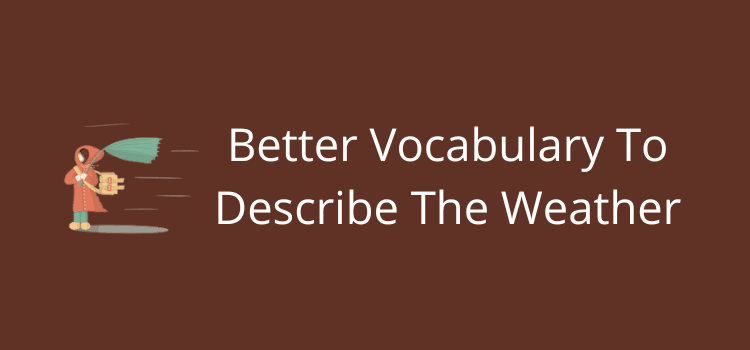
When you describe the weather in writing, you set the scene for your story or a part of your story.
It’s an opportunity to show readers the setting rather than tell them about the weather using a couple of quick adjectives.
Using highly descriptive or figurative language and a variety of grammar structures helps you paint the picture vividly in a reader’s mind.
In almost every story, both fiction and nonfiction, there is usually at least one reference to the weather.
Article Contents
How to describe the weather in writing
We all know this famous opening line from Edward Bulwer-Lytton’s 1830 novel, Paul Clifford.
It was a dark and stormy night.
Many have criticized the phrase, and Writer’s Digest went as far as to call it the literary poster child for bad story starters.
The main issue is that it uses two very weak adjectives: dark and stormy. Neither of them is usefully descriptive.
The second problem with the phrase is that it starts with a grammatical expletive .
When writing about the weather, using it was, or there was is a common writing fault. It’s because we so often refer to the weather as it.
But few people take into account what follows Bulwer-Lytton’s famous clause. It’s a pity because the complete sentence is a wonderful example of how to describe the weather in writing.
It was a dark and stormy night; the rain fell in torrents—except at occasional intervals, when it was checked by a violent gust of wind which swept up the streets (for it is in London that our scene lies), rattling along the housetops, and fiercely agitating the scanty flame of the lamps that struggled against the darkness.
He uses descriptive noun phrases , strong verbs, and powerful adjectives.
The combination of these three elements paints a vivid picture for readers.
Choosing your vocabulary

You can find many lists of common and unusual words to describe the weather, so you have plenty of choices.
But you should avoid words that are too simplistic. It was hot, cold, windy, or rainy are all very weak expressions.
But if you describe the heat, the cold, the wind, or the rain with noun phrases, you can improve these easily.
The sun started baking early across the plains, delivering a scorching promise for the day ahead.
The cruel icy wind cut like a knife across her cheeks.
Rain, as always, arrived too little, too late to save the crops.
Words that are not widely understood are also worth avoiding. While it’s interesting to find new words, not all of them are useful.
A good example is petrichor. It is the smell or scent of rain arriving after a period of dry weather.
But it is difficult to use, and it might send readers hunting for a dictionary.
The petrichor gave a hint of hope to the farmers.
It would be better to use a descriptive phrase.
The sweet far off scent of rain on dying grass gave hope to the farmers.
Brontide is another, meaning the sound of distant thunder or rumblings of an earth tremor. Again, it’s a great word to know, but with very limited use in writing.
Try this simple formula
Anytime you need to write about the weather, keep this little trick in mind.
Start with a noun phrase, use a strong verb , then add a descriptive clause .
You also need to describe the noun and verb with adjectives and adverbs.
Here’s a quick example.
The heavy dark clouds rolled slowly and low across the parched pastures, but they were heartbreakers, as not a drop of rain fell before the cruel wind carried them away.
It’s an easy way to make sure you avoid the grammatical expletive and weak adjectives.
You can also experiment with similes or metaphors . For example, raining cats and dogs.
Use verbs that sound like the weather

Onomatopoeic verbs and words are perfect for describing the weather because they make a sound.
Here are a few examples to illustrate sound words.
The pitter-patter of raindrops.
Thunder rumbled overhead.
Light hail pinged on the window pane.
With each step, the fresh snow crunched underfoot.
A bolt of lightning cracked across the night sky.
A cold north wind hissed through the trees.
A sudden boom of thunder forewarned us of the approaching storm.
Verbs and words like these are extremely useful because they are action words and highly descriptive.
This article is not a lesson or lecture on how to describe the weather in writing.
It’s purely a reminder that you can always improve.
I have listed a few ideas above, but there are many more ways you can make the weather more interesting.
All it takes is to remember that the setting for a scene or a story needs careful thought and imagination.
But if there are two key takeaways from my article, they are these.
1. Avoid using the grammatical expletive when referencing the weather.
2. Use noun phrases and strong verbs.
If you do those two things, the rest of your weather scene setting will come very easily.
Related reading: Words To Avoid In Writing That Say Nothing
About The Author
Derek Haines
More articles.

The Best Free Book Writing Software To Write Your New Book

Essential Writing Tools Every Working Writer Needs Today
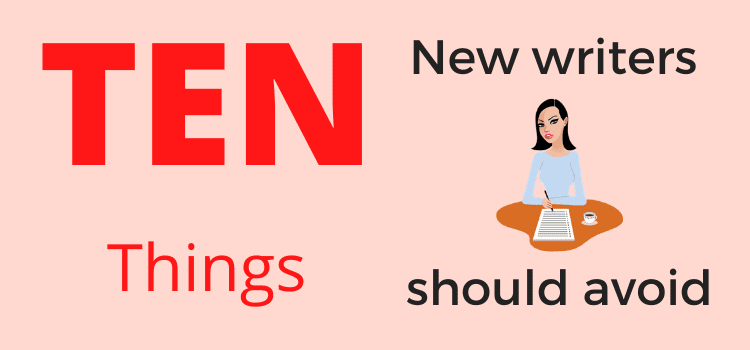
10 Things You Should Avoid As A New Writer Or Author
Leave a comment cancel reply.
Your email address will not be published. Required fields are marked *
Save my name, email, and website in this browser for the next time I comment.
To prevent spam, all comments are moderated and will be published upon approval. Submit your comment only once, please.
This site uses Akismet to reduce spam. Learn how your comment data is processed .
Privacy Overview
Writers in the Storm
A blog about writing.

Power Your Fiction: Using Weather To Create Mood, Not Clichés
Angela Ackerman
Are you afraid of using the weather in your writing? If so, you're not alone. After all, if not careful, weather description can be a minefield of clichés. The sunny, cloudless afternoon at the beach. The gloomy rainstorm at a funeral. Overdone setting and weather pairings can lie flat on the page.
Then there's the danger that comes with using weather to mirror a character’s inner emotional landscape. Mishandling this technique can quickly create melodrama. We've all read a battle scene where lightning crackles as our protagonist leaps forward to hack down his foe in desperation. And how about that turbulent teen breakup where the character's tears mix with falling rain? Unfortunately these have been used so much that most readers tilt their head and think, Really? when they read a description like this.

Wow, weather sounds like a recipe for disaster, doesn't it? It’s no wonder that some writers are so nervous about using it they cut it from their manuscript. But here’s the thing… avoiding weather in fiction can be a fatal mistake.
Make Weather Your Friend
Weather is rich. Powerful. It is infused with symbolism and meaning. And most of all, weather is important to us as people. We interact with it each day. It affects us in many subtle ways. In fact, let’s test this by walking in a character’s shoes.
Think about walking down a street. It’s late afternoon, crystal bright, and a hot breeze blows against you. School’s out and kids run willy-nilly down the sidewalk, laughter ringing the air as they race to the corner store for a grape slush. Your sandals click against the pavement as you turn down between two brick buildings. The side door to an Italian restaurant is just past a rusty dumpster, and your fiancée’s shift is about to end. You smile, feeling light. You can’t wait to see him.
Now, let’s change the scene.
It’s sunset, and the weather has soured. Dark clouds pack the sky, creating a churning knot of cement above you. The sidewalk is deserted, and the wind is edged in cold, slapping your dress against your legs as you walk. You wish you’d worn pants, wish you’d brought a sweater. In the alley, garbage scrapes against the greasy pavement and the restaurant’s dumpster has been swallowed by thick shadow. The side door is only a few steps away. You can’t quite see it, and while all you have to do is cross the distance and knock, you hesitate, eyeing the darkness.
The same setting, the same event. Yet, the mood and tone shifted, all because of the weather I included in the backdrop. What was safe and bright and clean became dark and alien. This the power of weather--changing how people feel about their surroundings.
Steering Your Reader's Emotions
Readers bring the real world with them when they enter a story. Avoiding weather description will be noticed as it's such a natural part of the everyday, and it becomes a missed opportunity to steer how our readers feel.
Weather is a tool to evoke mood, guiding the character toward the emotions we want them to feel, and by extension, the reader as well. By tuning into specific weather conditions, a character may feel safe, or off balance. Weather can work for or against the character, creating conflict, tension, and be used to foreshadow, hinting that something is about to happen.
Because we have all experienced different types of weather ourselves, when we read about it within a scene, it reminds us of our own past, and the emotions we felt at the time. So, not only does weather add a large element of mood to the setting, it also encourages readers to identify with the character’s experience on a personal level.
So how do we write weather in a clear way, and stay away from the pitfalls?
Use Fresh, Sensory Images. In each passage, I utilized several senses to describe the effects of the weather. A hot breeze. Garbage scraping against the greasy pavement. A wind edged in cold, slapping against the legs. By describing weather by sound, touch and sight, I was able to make the scene feel real.
Avoid Direct Emotion-to-Weather Clichés. There are some pairings we should avoid as I mentioned above, and with so many different types of weather elements we really need to think past the usual ones. Avoid mirroring and instead show the character’s reaction to the weather. This is a stronger way to indicate their emotions without being too direct.
Choose Each Setting With Care. Setting and Weather should work together, either through contrast or comparison. In the first scene, we have beautiful weather and an alley as a final destination. These two are contrasts—one desirable, one not, but I chose to show enthusiasm and anticipation for the meeting to win out. In the second, the weather becomes a storm. Now we have two undesirable elements, and as such, they work together to build unease.
Weather can have a positive or negative effect on setting and change the character’s reaction to it, so don’t be afraid to use it! Just remember that with something this powerful, a light touch is all that is needed.

Fog Image: Pixabay
Do you use weather in your stories? How do you go about it?

15 comments on “Power Your Fiction: Using Weather To Create Mood, Not Clichés”
I love your books! Wonderful post- thank you for sharing!
Thank you Alan--you made my day! Season's Greetings!
Thank you so much for the post! I have all 3 of your books and love them. I'm working on a novella that involves weather, Snowbound with the Stork, but I'm using a little twist. I'm using the "snow" event that crippled Atlanta and several other cities in the South with 1 to 1.5 inches of snow.
Carrie, so very glad our books are helping you as you write. And that sounds great! It is funny--I live in Canada, and well, we get SNOW if you know what I mean. I knew someone who lives in Vegas and a few years back they got an inch of snow and it completely paralyzed the city. Schools were closed, the whole deal. Haha, an inch of snow! But, when you are expecting it and don't know how to deal with it as a city, I can imagine it would cause havoc!
Great post, Angela! My WIP is a quest story, so weather (and nature in general) was something I tried to keep in mind when I was writing the first draft. Not only can it enhance or (literally) dampen the mood, but it can be an obstacle to the character's physical journey. At one point I wondered, "Why don't many quest stories have a scene where it rains?" So, I picked a scene where rain would be appropriate, and wrote it that way.
Yes, weather is great at creating conflict, so glad to hear you're bringing it into your story for that reason. Weather is unpredictable, and because we humans like to be in control, it is the perfect way to remind our protagonist that he is not. There are so many deep ways weather can bring more texture to any scene, so i love reading stories where it is used well. 🙂
Hello Angela. Fellow writer, Cathy Orzech, wrote to me saying, "Thought you'd be interested in this take on "Using weather to create mood…." I enjoyed your use and detail of weather in Amanda's Room." Cathy was right. I enjoyed your article very much and, with your permission, would like to reprint it on my blog, "Something Significant." In "Amanda's Room," I wanted to use the weather in a unique way, so I went beyond using it as a backdrop and instead turned it into a central character in the book. Following Ken Follett's example in "Code to Zero," I also led each chapter with factual quotes about the weather which later became linked to what was happening in the story and the lives of the characters. If you are interested, let me know and I would be happy to send you a complimentary copy of the ebook. In the meantime, warmest wishes for a wonderful holiday season. Warmest Regards, Chuck Miceli
So glad you found this article helpful. It sounds like you really have a good handle on how to use weather, so good on you! Feel free to reprint, and if you could just link to this one here, people can follow it back to the original should they wish to (and discover a great blog while they are at it!).
Happy writing!
I do include weather. It's such an every day part of life, how can you not? But I try to remember that how I describe the weather needs to be through the prism of how my characters are feeling - a kid waking up on the first day of summer holidays is going to feel differently about a beautiful day than a kid being made to run laps in phys ed. The weather might be exactly the same but in one situation the sunshine is an invitation, in the other it's a merciless torturer.
This was a great post. Thanks for sharing it.
Yes, absolutely. All description should come through that emotional filter as it brings readers deeper into the mind and heart of the POV character. Glad you enjoyed the post!
[…] Ackerman discusses how to use weather to create mood, not clichés on Writers in the […]
Warmer weather and bright sunshine foreshadow the action in my YA winter adventure short story in this month's Cricket Magazine. Thank you for your insight on how to make weather integral to the plot and characterization.
Very happy to help, Victoria!
[…] Power Your Fiction: Using Weather To Create Mood, Not Clichés By Angela Ackerman […]
[…] “Power Your Fiction: Using Weather To Create Mood, Not Clichés” by Angela Ackerman (Wr… […]
Subscribe to WITS
Type your email…

Recent Posts
- More Home Defense Techniques for Any Characters
- The Value of Paid Book Reviews: Are They Worth It?
- Using Light and Shadow to Convey Mood
- The Crucial Role of Self-Confidence in Creativity
- Address the Root Causes and Unlock Your Writer's Block
- Ellen Buikema
- Jenny Hansen
- Lynette M. Burrows
- Lisa Norman
Copyright © 2024 Writers In The Storm - All Rights Reserved

How to Use Weather in Creative Writing

If you are a bit hesitant to use weather in your writing , you’re not alone. After all, there’s a fine line between using weather as a setting tool and turning your work into a melodrama riddled with clichés. But avoiding weather altogether is a mistake all on its own.
The weather plays a significant role in creative writing. Not only can it be used in all kinds of atmospheric descriptions and to move the plot forward, but it also sets the tone, foreshadows upcoming events, and can portray emotion within the story.
If weather feels like a recipe for disaster, you might not be utilizing it right. Not to worry! Below, we will show exactly how you should be using weather in your creative writing so you can add that extra bit of “umpf” to your story.
Use Weather to Set the Scene
One of the easiest and most natural ways to use weather is to set the scene. This is also where a lot of writers mess up.
Now, we’re not saying you should give your reader a full weather report at the beginning of a scene. Not only is that boring and unnecessary, but it delays the story and can pull a reader from immersion. However, if you don’t mention the weather at all, an essential element will be missing from your writing. Weather is a great way to create mood and drive the plot , and it allows readers to visualize and feel the world you’re creating.
Weather as Setting
When it comes to creative writing , the weather is a crucial part of the setting. It plays a big role in allowing the reader to immerse themselves into the world you are creating.
For example, imagine that a town was described by a character as “wet and dreary 365 days a year.” Now imagine that the writer only gave details of the architecture, food, and people in the town. It would feel like something was missing.
You might be waiting for the mention of the clouds in the sky or the wetness in the air, whether that be rain or fog. Maybe the town is by the ocean? Something to show you why the town is considered wet.
Avoid weather in your writing can leave the reader asking questions and pull them away from the story.
Creating Mood with Weather
The weather you choose and the way you describe it can completely set the mood of a scene.
Let’s say you have three friends standing side-by-side with a long road ahead of them. Now let’s add some weather:
- Storm clouds are in the distance: This could symbolize or foreshadow trouble ahead. Readers would expect to see many obstacles.
- Light snow is falling: Their journey could be a cleansing of sorts or the end of something. Snow also has a quietness and softness to it.
- The sun is high on a spring day: This often creates an uplifting mood. Spring typically symbolizes hope and new birth, while sunshine tends to make people feel happy.
Even though the scene is pretty much the same, changing the weather can give it a completely different feel and change a reader’s expectations of the story .
Using Weather as a Plot Device
Most of us, if not all, have seen or know of the movie Twister. If you aren’t sure what that is, Twister is a 90s film about a large tornado and a team of storm chasers who create an advanced weather alert system. Even if you haven’t seen the movie , it’s fairly obvious that this story wouldn’t be much without the use of weather.
However, the weather doesn’t have to be the star to be used as a plot device. Even the most ordinary weather can drive the plot of a story.
- A hot summer day and broken air conditioner could be the driving factor that makes your character leave home on a particular day.
- Light snow at the beginning of winter could be the one thing that two characters bond over.
- Rain can spoil an outdoor gathering, sparking drama among attendees.
Weather as a plot device can be subtle or dramatic, as long as it’s moving the story forward somehow. If it’s not, then you’ve got some work to do.
Use Weather Descriptions Sparingly
Decide how weather can be used in your story , and then think about how much time to spend on it.
Remember, your reader doesn’t want a weather report. Typing out a well-written sentence or two is enough you convey what you are trying to say about the weather without letting it drag on.
However, if the weather is a key point in that scene (like Twister ), make it count. Make the storm seem like an experience your readers won’t forget. This can be made even more powerful by keeping other weather descriptions small.
Scattering descriptions throughout a scene is a great way to utilize weather without overdoing it.
- Your character notices the scorched pines on the evergreen trees. (This could be the sign of an extremely hot summer.)
- Your character’s hair sticks to the back of their neck. (This is a sign of heat and humidity.)
- Two characters have a hard time hearing each other over the sound of raindrops.
Add your weather descriptions in as your characters interact with the world. This will also help if you struggle with telling instead of showing.
Avoid Clichés or Rework Them
Weather is a great way to convey emotion in a scene but be careful to avoid clichés. We’ve all seen the gloomy funeral rainstorm, the lightning strike just as the hero delivers the final blow, and the cloudless sunny day at the park.
While these are all fine, they mirror what the character is supposed to be feeling instead of diving into that character’s emotions. So, instead of mirroring, show how the character reacts to the weather. That way, even if you feel drawn to use a cliché weather scene, you have the opportunity to rework it and make it your own.
For example, if you like the idea of the rainy funeral, maybe your main character smiles as the rain hits her skin because it reminds her of a fond memory of the deceased. This allows you to use that scene while making it a little less cliché and gives your readers more insight into the character.
Final Thoughts
Using weather is a great way to spice up your writing . It can change moods and propel the story . So don’t be afraid to take advantage of this while you’re creating your world! However, remember that while the weather may have a huge effect , it doesn’t need to be seen too frequently and can easily become boring and overdone.

Weather Writing Prompts: Explore Atmospheric Narratives
My name is Debbie, and I am passionate about developing a love for the written word and planting a seed that will grow into a powerful voice that can inspire many.

Why choose our weather writing prompts?
Unleashing the power of weather in your writing, let weather weave the tapestry of your words, enhance your descriptive skills with weather writing prompts, crafting compelling characters: weather’s role in character development, (un)predictable weather: using weather as a plot device, from sunny to stormy: portraying mood and setting through weather, creating tension and conflict: harnessing the forces of nature, weather as a symbol: exploring deeper meanings in your writing, transforming atmosphere: tips for bringing weather to life in your narratives, enhancing the atmosphere: techniques to infuse life into weather in your stories, frequently asked questions, to conclude, weather writing prompts: explore atmospheric narratives.
Unleash your creativity and embark on a thrilling journey through atmospheric narratives with our weather writing prompts. Whether you’re an aspiring author or simply looking to enhance your writing skills, these prompts will transport you into the captivating world of weather and help you craft compelling stories that truly come alive.
Discover the magic of weather-related plotlines and characters as you engage with the unpredictable forces of nature. With our diverse range of prompts, you can explore a wide array of weather phenomena and their impact on individuals, societies, and even fictional realms. From raging storms to serene sunsets, each prompt presents a unique opportunity to vividly describe settings, evoke emotions, and weave gripping tales.
Here are a few reasons why our weather writing prompts are a must-try:
- Diverse scenarios: Our prompts cover a broad spectrum of weather events, allowing you to delve into both common and extraordinary meteorological situations.
- Deep exploration: You’ll have the chance to dive into the intricacies of weather patterns, uncovering the impact they have on people, places, and even otherworldly realms.
- Emotional connection: Experience the power of weather as a character in your narratives, leveraging its ability to heighten tensions, mirror characters’ moods, or even serve as a catalyst for change.
- Flexibility and adaptability: Our prompts are designed to suit writers of all backgrounds and genres, providing a foundation for creativity that can be tailored to your own unique vision.
Unlock your storytelling potential with our weather writing prompts and let your imagination take flight amidst the swirling winds, the gentle raindrops, and the commanding thunderclaps. Dive into a world where the atmosphere serves as the backdrop for unforgettable narratives!

Weather holds an immense power over our lives, and it can do the same for your writing. Incorporating weather into your stories adds depth, emotion, and atmosphere, enhancing the readers’ experience by immersing them in a vibrant and dynamic world. From the tranquil embrace of a warm summer breeze to the furious onslaught of a thunderous storm, the weather becomes a character itself, influencing the mood, shaping events, and reflecting the inner thoughts and struggles of your protagonists.
When skillfully employed, weather can become a tool to evoke a wide range of emotions. It sets the stage for pivotal moments, emphasizes tension, or serves as a respite from daily hardships. Picture a serene sunrise casting a golden hue on a character’s life after a period of darkness, or the relentless rain mirroring a protagonist’s despair during an important setback. By painting vivid weather scenes, you harness the raw power of nature to captivate your readers and enhance the overall impact of your writing.
- Transport your readers: Weather can transport your audience to different atmospheric surroundings, whether it be a windswept moor, a bustling city amid a gentle snowfall, or an arid desert swept by a scorching wind.
- Symbolism at its finest: Weather elements can serve as powerful symbols that echo the themes and conflicts of your narrative. A thick fog may mirror a character’s confusion, while a rainbow might symbolize newfound hope.
- Create a sense of urgency: Thunder, lightning, or an approaching storm can inject urgency into your story, propelling the plot forward and adding layers of suspense and anticipation.
Unlock the true potential of your writing by harnessing the influence of weather. Allow it to breathe life into your character’s journeys, shape their destiny, and ignite emotions within your readers. By embracing the power of weather, your writing will surge to new heights, enveloping your audience in a world they won’t want to escape.
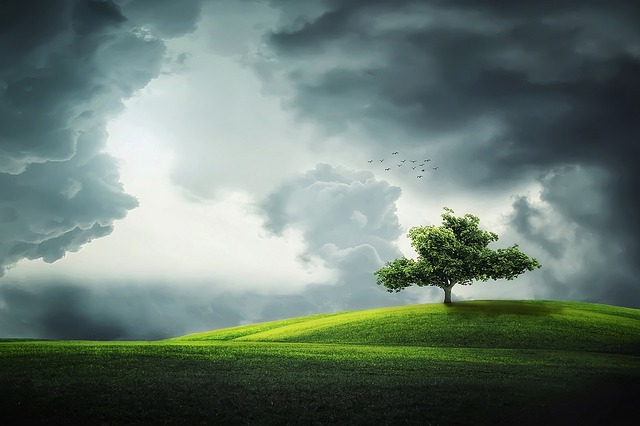
Are you looking to elevate your descriptive writing skills and immerse your readers in captivating atmospheric descriptions? Look no further! Our weather writing prompts are the perfect tool to help you hone your storytelling abilities while exploring the intricacies of Mother Nature’s moods. From blistering heatwaves to bone-chilling snowstorms, these prompts will ignite your creativity and enable you to write vivid scenes that transport your audience.
1. Dive into Extreme Weather Encounters: Step out of your comfort zone and challenge yourself to describe extreme weather events. Picture yourself caught in a wild thunderstorm, with lightning illuminating the sky above and torrents of rain cascading down. Explore the sensations, emotions, and details you would include to make your readers feel as though they are right there with you.
2. Capture the Serenity of a Calm Spring Morning: Shift gears and transport your readers to a tranquil scene of a peaceful spring morning. Paint a picture of dew-kissed flowers, the gentle sway of willow branches, and birdsong filling the air. Think of unique ways to describe the softness of a fresh breeze, the vibrant colors of budding blossoms, or the delicate scent of blooming flowers, enticing your readers to experience the serenity for themselves.
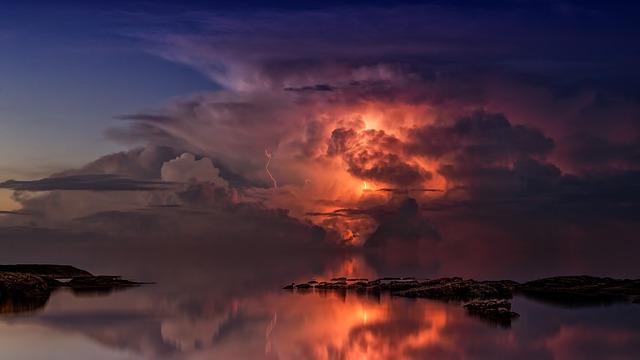
Weather is often overlooked as a powerful tool in crafting well-rounded and compelling characters. While it may seem mundane, the weather can add depth and dimension to your characters, revealing their personality traits, emotions, and even shaping their actions and decisions. By harnessing the influence of weather on your characters, you can create a more immersive and realistic story that captivates readers.
1. Setting the Mood: The weather can set the tone of a scene and evoke specific emotions in your characters. For example, a brooding and stormy sky can reflect a character’s inner turmoil, while a sunny and vibrant day can convey their joy and optimism. By carefully selecting weather conditions that align with your character’s current emotional state, you can enhance the reader’s connection with the character and intensify the impact of key moments in the story.
2. Symbolism and Foreshadowing: Weather can be a powerful symbol, subtly hinting at future events or foreshadowing important plot points. A sudden gust of wind might foreshadow a disruptive force entering the character’s life, or a serene morning mist could symbolize their inner clarity before a major decision. These symbolic weather patterns add layers of meaning, increasing the depth and complexity of your characters.
Weather is not just something we experience on a day-to-day basis; it can also add depth and excitement to our stories. As a powerful plot device, weather has the ability to influence events, reveal character traits, and create tension. By incorporating weather into your narrative, you have the opportunity to captivate readers and enhance the emotional impact of your story.
One of the compelling aspects of using weather in storytelling is its inherent unpredictability. Just like in real life, weather in literature can be a fickle force, throwing unexpected obstacles or opportunities in the path of your characters. From sudden thunderstorms to blistering heatwaves, extreme weather events can act as catalysts, driving the plot forward in ways that keep readers on the edge of their seats. Moreover, utilizing weather as a plot device allows you to tap into the symbolism associated with different weather conditions.
- Rain: Rain can represent renewal, washing away burdens, or creating a somber atmosphere.
- Snow: Snow often conveys isolation, purity, or the idea of starting anew.
- Heatwave: Oppressive heat can heighten tension, leading to heightened emotions or conflict.
- Fog: Fog can be used to create mystery, uncertainty, or a sense of confusion.
By skillfully utilizing these weather elements, you can introduce symbolism and foreshadowing, reinforcing the themes and motifs of your narrative. Furthermore, weather can act as a powerful tool in character development. How a character reacts or responds to changes in weather can reveal their true nature, their fears, or their resilience. For example, a protagonist seeking solace might find comfort in the rain, while another character might embrace the storm as a challenge to prove their strength.
When it comes to storytelling, weather can be a powerful tool for setting the mood and creating a captivating atmosphere. By carefully selecting and portraying different weather conditions, writers can enhance the readers’ experience and deeply immerse them in the story. Whether it’s a sunny day with clear skies or a stormy night filled with thunder and lightning, the weather can evoke a range of emotions and help shape the overall tone of the narrative.
One way weather can portray mood is through the use of contrasting elements. For example, a bright and sunny day with a gentle breeze can evoke feelings of joy, happiness, and serenity. On the other hand, a stormy setting, with dark clouds, torrential rain, and howling winds, can create a sense of tension, fear, or even chaos. By juxtaposing these two extremes, writers can effectively highlight the sharp contrast between different emotions or events in the story.
- Lightning and Thunder: The sudden crack of thunder or flash of lightning can bring a dramatic and intense element to a scene, representing danger, power, or even a turning point in the story.
- Fog and Mist: A thick layer of fog or mist can create an eerie and mysterious atmosphere, shrouding the surroundings in uncertainty and making them seem otherworldly.
- Gentle Rain: Soft rainfall can be used to symbolize renewal, growth, or a calming effect on the characters, often associated with reflection or introspection.
By leveraging the emotional impact of weather, writers can effectively draw readers into their narrative, making them feel as though they are experiencing the story alongside the characters. From a sunny day that sets the stage for a heartwarming romance to stormy weather intensifying a climactic scene, the use of weather as a tool for portraying mood and setting is truly limitless. So, next time you find yourself writing a story, don’t forget to consider the power of weather and how it can greatly enhance the depth and impact of your storytelling.
If you’re looking to create tension and conflict in your writing, why not turn to the powerful forces of nature for inspiration? These natural elements have an inherent ability to evoke emotions, drive plots forward, and create an atmosphere of suspense that keeps readers gripped till the very end.
One way to harness the forces of nature is through the use of extreme weather conditions. Incorporating a raging storm or a bone-chilling blizzard into your story can instantly raise the stakes and intensify the conflict. Imagine your protagonist being trapped in a deserted cabin, battling the relentless wind and snow, while their adversary lurks outside. The turmoil and danger lurking outside serve as constant reminders of the imminent threat, keeping readers on the edge of their seats.
- Lightning strikes: Symbolic of sudden and unexpected events, lightning strikes can add an element of surprise to your story.
- Tornadoes and hurricanes: These powerful natural disasters can create chaos and destruction, offering a perfect backdrop for high-stakes confrontations.
- Severe heatwaves: Intense heat can quickly escalate tensions among characters, leading to explosive conflicts.
To truly captivate your readers, it’s essential to delve beyond the superficial effects of nature and explore how they mirror the inner turmoil of your characters. Consider using metaphors and symbolism to represent their internal conflicts through the external forces of nature. By weaving these elements together, you’ll create a powerful narrative that resonates with readers and leaves them eagerly turning the pages.
Weather has long been used as a powerful symbol in literature, helping to convey emotions, foreshadow events, and add depth to the overall meaning of a story. Just as stormy skies can symbolize turmoil and conflict, sunny days can represent hope and happiness. By incorporating weather symbolism into your writing, you can create a more engaging and layered narrative that resonates with your readers on a deeper level.
One of the key advantages of using weather symbolism is its ability to evoke specific emotions. Just think about how a gentle rain shower can create a sense of calm and introspection, while a fierce thunderstorm can heighten tension and evoke a sense of impending danger. By carefully choosing the weather conditions in your scenes, you can enhance the mood and atmosphere, guiding your readers’ emotions and reactions. Whether it’s using a sweltering heatwave to symbolize the intensity of a character’s desires or a dense fog to represent confusion and uncertainty, the possibilities are endless.
Weather can be more than just a backdrop in your narratives; it can become a character itself, adding depth and emotion to your storytelling. Here are some tips for transforming the atmosphere and bringing the weather to life in your writing:
- Setting the Stage: Begin by establishing the current weather conditions to immerse your readers in the scene. Describe the temperature, wind, or any unique meteorological phenomena to create a vivid visual and sensory experience.
- Create Atmosphere: Don’t limit yourself to basic descriptions; delve deeper into the emotional impact of the weather. For instance, a gloomy rainstorm could reflect feelings of sadness or hint at impending danger. Utilize metaphors and similes, comparing the weather to a state of mind, to evoke a stronger emotional response from your readers.
- Show, Don’t Tell: Rather than simply stating the weather conditions, show how they affect your characters and their surroundings. Highlight physical reactions, such as hair blowing in the wind or clothes clinging to damp skin, to convey the intensity of the weather and its influence on the story.
Remember, the weather can drastically shape the mood, tension, and even plot progression in your narratives. Utilize these techniques to harness the power of the elements and elevate your storytelling to new heights.
Q: What are weather writing prompts? A: Weather writing prompts are creative prompts or ideas that encourage writers to explore atmospheric narratives inspired by elements of the weather.
Q: How do weather writing prompts work? A: Weather writing prompts provide a starting point or a theme related to weather. Writers can use these prompts as inspiration to write stories, poems, or descriptive narratives that revolve around the atmospheric conditions.
Q: Why are weather writing prompts beneficial? A: Weather writing prompts allow writers to tap into their imagination and create narratives infused with the power and beauty of the weather. They offer a unique way to explore descriptive storytelling and evoke emotions through atmospheric elements.
Q: Can you provide examples of weather writing prompts? A: Certainly! Here are a few examples of weather writing prompts: 1. Write a story that takes place during a torrential rainstorm. 2. Describe the setting of a coastal town during a foggy morning. 3. Write a poem inspired by the tranquility of a gentle snowfall. 4. Imagine a character caught in a raging thunderstorm and write about their experience. 5. Create a narrative in which a heatwave plays a significant role.
Q: Are weather writing prompts suitable for all genres? A: Absolutely! Weather writing prompts can be used in various genres, including fiction, poetry, and even non-fiction. They can add depth, imagery, and atmosphere to any type of writing.
Q: Can weather writing prompts be used by writers of all skill levels? A: Yes, weather writing prompts are suitable for writers of all skill levels. Whether you’re a beginner exploring your creativity or an experienced writer looking for fresh inspiration, these prompts can help you develop your writing skills and spark your imagination.
Q: How can weather writing prompts improve my writing? A: Weather writing prompts encourage the development of descriptive skills, enhance the ability to evoke emotions, and foster creativity. By incorporating weather elements into your narratives, you can engage readers on a sensory level and create a more immersive storytelling experience.
Q: Where can I find weather writing prompts? A: Weather writing prompts can be found in various places. You may discover them in writing resources, creative writing books , online writing communities , or even by simply observing the weather around you and letting it inspire your own ideas.
Q: Is it necessary to stick strictly to the weather prompts? A: Not at all! Weather writing prompts are meant to inspire your creativity. While adhering to the prompt is one approach, you can also use them as a springboard to create your unique narratives that incorporate elements of the weather in imaginative ways.
Q: Can weather writing prompts be used for collaborative writing exercises ? A: Certainly! Weather writing prompts can be an excellent tool for collaborative writing exercises. They provide a shared starting point and theme, allowing multiple writers to explore different aspects of the weather and weave them together into a cohesive narrative.
In conclusion, weather writing prompts offer a unique opportunity to explore atmospheric narratives, allowing writers to vividly depict settings and evoke emotions. So, grab a pen and let your imagination soar with the power of weather!
Do You Italicize Book Titles in Formal Writing? Expert Guidance
Writing in Math Prompts: Integrate Mathematics and Writing
Leave a Comment Cancel reply
Save my name, email, and website in this browser for the next time I comment.
Reach out to us for sponsorship opportunities.
Welcome to Creative Writing Prompts
At Creative Writing Prompts, we believe in the power of words to shape worlds. Our platform is a sanctuary for aspiring writers, seasoned wordsmiths, and everyone. Here, storytelling finds its home, and your creative journey begins its captivating voyage.
© 2024 Creativewriting-prompts.com
Beginning A Composition With Weather Descriptions
- Sunday, Sep 9th, 2018
- By: BIG IDEAZ
- Composition Framework
- Writing Techniques
Estimated reading time: 5 minutes
Weather description is one of the easiest ways for young writers (6 to 8 years old) to begin their compositions. This is also usually the first story starter that they are being taught in school.
For children who are weak in the language, writing a good weather description can be an easy and effective way to get them started in their composition.
However, most teachers do not encourage flowery weather descriptions such as these:
“White fluffy clouds dotted the azure blue sky as the sun beamed beatifically, casting a golden glow upon the earth.”
“The sky was an expanse of sapphire blue, dotted with feathery white clouds as the radiant rays of the sun shone brightly in the azure blue sky.”
You get the picture.
Proper Use of Weather Descriptions in English Compositions
Weather descriptions is an easy way for young writers to begin their stories. Primary 1 and 2 students can start their compositions with weather descriptions, if weather plays a part in the plot.
There is no need to memorise a hugh chunk of bombastic weather descriptions.
Simple words can sometimes be more effective than bombastic ones.
These are some of the weather descriptions written by our P1 and P2 students:
“It was a cool and breezy evening. A strong gust of wind blew against my face.”
“It was a bright and sunny morning. White, fluffy clouds drifted across the sky.”
“Lightning flashed across the sky. A storm was coming.”
Short. Simple. Readable.
The kids came up with these weather descriptions themselves, without memorising any bombastic phrases.
Most importantly, they are natural, something which children can understand, remember and apply in their writing.

Get this set of PSLE Model Compositions with writing techniques highlighted.
So, how can children be taught to write weather descriptions?
For children who are really weak in the language, even writing a simple sentence to describe a sunny day can be difficult. These children often resort to starting their compositions with “One day, we went…” or “One fine day, Peter was …” or “Last Sunday, my family and I …”.
Such story beginnings can be boring and not captivating.
Students can learn to write effective weather descriptions. In our classes, we get our students to do brainstorming.
1. Brainstorm and make a list of all kinds of weather that you can think of.
- cold and rainy
- cool and breezy
- bright and sunny
- scorching hot
2. For each weather type, imagine how the sky, sun, clouds and other weather elements look like.
Describe each element in simple, readable English .
Weather Type: BRIGHT AND SUNNY
Describe the sun: – shines brilliantly – bright – like a fire ball
Describe the sky: – clear, blue sky
Describe the clouds: – white, fluffy clouds – sunlit clouds
3. Form sentences using some of these descriptions.
It was a bright and sunny day. The sun shone brilliantly in the clear, blue sky .
It was a bright and sunny day. White, fluffy clouds drifted across the clear, blue sky .
The above 3 steps are effective in teaching young children (Primary 1 to 3) to come up with weather descriptions that sound natural. Most children are able to come up with beautiful weather descriptions without resorting to the method of memorising huge chunks of unreadable flowery language.
Download the FREE Brainstorming Sheet for Weather Description
Use Weather Descriptions Appropriately
Some students have the habit of starting every composition with weather descriptions, regardless of topic or setting. Remember to use weather descriptions only if weather plays a part in your story. For example, if a rainy weather contributes to the plot of the story, it is a good idea to describe the weather, especially the rain and the coldness. If a story is set outdoors, it is fine to describe the weather too.
However, many students fell into the trap of starting their compositions with describing the sun, the clouds and the sky when their story is set indoors! This is a huge mistake, which should be stopped.
Other Types of Story Beginnings
For stories which are not set outdoors or not affected by the weather, there are other types of story beginnings that can be used.
Students can begin their compositions with speech , which is also a common way of beginning a primary school composition.
Another effective way is to begin with a captivating statement or an intriguing question. Such a beginning hooks readers immediately to read on. When used correctly, it piques a reader’s curiosity and make them want to continue reading to find out what happens next.
Upper primary students can begin their stories with character descriptions . This is useful to show a change in the character at the end of the story. For example, a timid person who became courageous, or a bully regretting his actions and turning over a new leaf.
Beginning with an action is great if you want to move the story along quickly. Students can use suitable vivid verbs to clearly describe a character’s actions at the beginning of the story.

Get our FREE pack of 300 vocabulary cards that your child can use in his or her compositions.
Writing is a skill that improves with practice.
Enrol in our highly popular Writing Academy or Junior Writing Academy , our online courses that support primary school students in developing their English composition writing skills.

Related posts:
Author: BIG IDEAZ
Click on the icon below to chat on WhatsApp or email us at [email protected] or self-help with our FAQs .
Prompt response during working hours on weekdays/Saturdays.
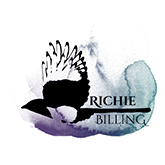
- Short Stories
- Writing Tips
- Fantasy Writing
- Worldbuilding
- Writing Classes
- Writing Tools
- Progress Report
Using The 5 Senses In Writing: Examples To Inspire You
Using the 5 senses in writing can deeply immerse readers in scenes and stories by creating more vivid imagery in their minds. It’s a skill that can elevate books to a higher level. In simple terms, it is writing that employs the five sense to create mental images for the reader.
But so often we writers find ourselves lured into the trap of relying on sight and sound. Relying on a narrow range of sensory language isn’t always enough to bring a story to life. We can inject so much more into our stories simply by utilizing sensory details in our writing.
In this guide, we’ll take a look at our sensory organs, why we use vivid writing, look at a bunch of illustrative 5 senses examples, and ways we can use each sense to elevate our stories to the next level.
Many people experience things through smell, touch, and taste. It’s our job as authors to use the five senses in writing to enrich our tales and prose with vivid imagery, which is often used to help the reader feel immersed and engaged.
In fact, the oft-forgotten 5 senses are some of the most powerful forms of description, things that can enrich a story and give it life. Here’s how you can master it.
What Are The Five Sensory Organs?
Why do we use the 5 senses in writing, 5 senses examples in writing, examples of a descriptive paragraph using the five senses, a checklist for using the five senses, exercises to help you use the 5 senses in writing, adjectives for the five senses, tips on using the 5 senses to describe something, advice on describing people using the 5 senses, more 5 senses examples and guides, frequently asked questions (faq) on using the 5 senses in writing.
Before we dive into looking at the 5 senses in a writing context, let’s look at what the five sensory organs are:
- Special receptors in the skin that enable us to touch and feel
Combined, our five senses enable us to learn, experience and create memories. Pepsi Max, for example, always reminds me of my history lessons in college—I’d drink a can during every lesson. Think of songs too. They have an incredible ability to transport us back to moments in our past. Let’s explore things in more detail.
Now, something you may be wondering about is whether or not there are more than the 5 classic senses. It is, in fact, believed that there is more than touch, taste, sound, sight, smell. These golden 5 were defined by Aristotle because he could relate them to sensory organs. They are sometimes known as the “five senses folk model”.
But it depends on the manner in which you define a sense.
Newer approaches look at the number of sensory organs we have. And many academics now counter the sixth sense as the vestibular system. This relates to the inner ear and the impact it has on our balance and vision.
But other academics have gone further than this. Some tweak the definition to include sensory receptors. Now the skin, for instance, has at least four sensory receptors, relating to pain, temperature, touch and body awareness (otherwise known as proprioception).
So when someone asks how many senses do we have, it’s all a matter of definition. You can check out this awesome video below by SciShow which explains things in more detail.
Perhaps the main one of the five senses, sight often receives information first and therefore forms our initial judgements.
When it comes to using sight in writing, our stories and characters are often guided by this prime form of description. We describe what our characters see.
However, it would be nigh impossible to describe every aspect of a scene, and even if you did achieve it, nigh impossible to read.
Some of the most acclaimed writers, Charles Dickens, in particular, approached it by picking the right details. The little things that tell us everything. Let’s look at an example of the sense of sight in writing from Great Expectations :
“There was a bookcase in the room; I saw, from the backs of the books, that they were about evidence, criminal law, criminal biography, trials, acts of parliament, and such things. The furniture was all very solid and good, like his watch-chain. It had an official look, however, and there was nothing merely ornamental to be seen. In a corner, was a little table of papers with a shaded lamp: so he seemed to bring the office home with him in that respect too, and to wheel it out of an evening and fall to work.”
This is Jagger’s office. Though he doesn’t feature, we’ve gleaned much about who he is from details like the types of books upon the shelves and the paper-filled table, suggesting he lives a busy, professional life.
Colour is another fantastic tool when it comes to sight. Dickens was known for using colours to portray emotions or themes, such as red for frustration or anger, black for death, white for purity or goodness. Using colour, particularly with themes and the premise , can add extra layers to a story.
We explore some more 5 senses examples below to give you some ideas when it comes to sight.

Writing Prompt
Stand in the middle of your bedroom. Look all around you. Make notes of every little detail you see. Colours, shapes. Crumbs or dust on the floor. The more attentive you can be the better.
Pick out things that could relate to characterisation. The books on a shelf perhaps—what kind of books are they? Are there empty glasses beside your bed, dishes too? All of this helps to build interesting imagery, as well as contribute to other elements of the story, in this instance, characterization .
Sound is incredibly important when it comes to using the 5 senses in our writing. Dialogue dominates many stories, but so often little attention is paid to how characters sound when they talk. It’s strange when you think about how unique people sound, and a person’s voice makes such a difference to how we form views of them.
Something I learned not so long ago is that ducks don’t quack. They tend to grunt or even cackle. It’s easy to assume how things sound, but sometimes what we assume is wrong.
It’s always worth taking the time to research. In doing so you may find new and original ways to describe the sound. Using metaphors and similes, particularly if the sound is unusual, is a great way to bring clarity to descriptions.
Another often overlooked thing is silence. Silence is an excellent tool to set the tone or build an atmosphere or tension . A noiseless forest. A still, foggy street. Eerie.
Either using yourself or ideally, your character, place yourself in a location in which things are happening around you—a park, for instance. Close your eyes and listen.
Make a note of every little sound you hear, from tweeting birds to jackhammers digging up roads. If you can, make a note of how different sounds make you feel. Do fireworks startle you, for instance? Then think about why they could startle you or your character.
Of all the five senses, touch is, in my view, one of the most powerful yet underrated ones. If you can convey touch in an effective way, you’ll reap the rewards.
The scope of this sense depends on the nature of the scene, but imagine, for example, walking barefoot through a forest. The softness of moss between your toes, the cool slime of mud, the pokes and scratches of sticks and stones. Such details can draw readers deeper into the story.
We’ll look at some sensory writing exercises below, but as a brief writing prompt now, close your eyes and pick something up. Describe how that object feels. What features does it have? The texture? Sturdiness? Width? Weight?
These little details can make all the difference when it comes to incorporating the 5 senses in your writing.
Taste is the more neglected one out of the five sensory organs when it comes to writing. Just like all of the senses, using taste can enrich your story immensely.
How many times have you said the phrase, “It tastes like …”. So many of our memories are tied to tastes. Like I said before, Pepsi Max always reminds me of history classes in college. Which tastes trigger memories for you?
If this happens to us, it happens to your characters too. It’s a great thing to include within your characterization process.
Like smell, taste can serve as a trigger for memories. For example, a husband who shared a love for apple turnovers baked by his deceased wife is reminded of her whenever he eats one.
Taste can also trigger emotions. There’ve been times when I’ve eaten food that tasted so good I bounced with glee in my chair.
A fun one. Head down to your kitchen and finding something to eat that has a bit of texture. Close your eyes, take a bite. Focus closely as you chew, as the food rolls around your mouth, over your tongue and down your throat. How does it taste? How does it make you feel?
We, at last, arrive at smell, though its place is no reflection on its importance when it comes to using the 5 senses in our writing.
The power of smells cannot be underestimated. We smell things all of the time and those scents help to shape our impressions. What can you whiff right now?
A smell helps us to form a judgement on things, such as whether something’s okay to eat. And crucially, smells can trigger vivid memories and emotions, vital tools to any writer.
Here’s one of my favorite 5 senses examples for using smell in writing from James Joyce’s Ulysses :
“ Mr Leopold Bloom ate with relish the inner organs of beasts and fowls. He liked thick giblet soup, nutty gizzards, a stuffed roast heart, liverslices fried with crustcrumbs, fried hencods’ roes. Most of all he liked grilled mutton kidneys which gave to his palate a fine tang of faintly scented urine.”
How do you describe the smell of rain in creative writing?
Similar to the task above which involves a trip out to a busy place, like a park, sit down and have a good sniff. Another good place to try is a coffee shop. Lots of smells of roasting coffee and baking cakes in there.
Importantly, think about where those smells lead you in your mind. Do they trigger memories? Do associated words pop into your mind? From your character’s perspective, this is what their experience would be like too.
So, as we’ve seen above, this style of descriptive writing employs the five sense to create mental images for the reader.
Using the 5 senses in writing is crucial for creating vivid, engaging narratives. When we incorporate sight, sound, touch, taste, and smell, we activate the reader’s sensory experiences which can help make the story more immersive and memorable.
Neuroscience supports this approach. Studies show that sensory details engage the brain’s sensory cortex, enhancing emotional and cognitive processing ( Fischer & Zwaan, 2008 ). This means readers are not just passively reading but actively experiencing the text, which boosts retention and emotional connection.
On top of this, sensory-rich descriptions can trigger mirror neurons, which help readers empathize with characters’ experiences ( Iacoboni, 2009 ). This empathy can deepen their engagement and investment in the story, making it more impactful.
Renowned authors like Ernest Hemingway and Gabriel García Márquez skillfully use sensory details to create vivid imagery and evoke strong emotions. Their works demonstrate how sensory descriptions can transform simple narratives into powerful, lasting experiences. Below, we look at some examples of the five senses in writing to help illustrate how powerful this approach can be.
So, incorporating the five senses in writing is not just a stylistic choice but a scientifically-backed method to enhance reader engagement, emotional response, and memory.
Let’s move on to look at some 5 senses examples. As we’ve seen above, vivid imagery is often used to help the reader feel immersed in the story. So in this section, I’ve provided some descriptive writing examples from some bestselling books that make great use of the 5 senses.
“The tearing of flesh, as though a butcher were yanking meat from a flank. The bubbling of liquids and the soft rasping of the cutting tools.” Tooth & Nail , Ian Rankin
“Stars spun across his vision and his head felt as if it were about to burst… With difficulty, Hanno undid the chinstrap and eased off his helmet. Cool air ruffled his sweat-soaked hair.” Hannibal: Fields of Blood Ben Kane
“A cold wind was blowing out of the north, and it made the trees rustle like living things. All day, Will had felt as though something were watching him, something cold and implacable that loved him not.” A Game of Thrones, George RR Martin
“It was dark and dim all day. From the sunless dawn until evening the heavy shadow had deepened, and all hearts in the City were oppressed. Far above a great cloud streamed slowly westward from the Black Land, devouring light, borne upon a wind of war; but below the air was still and breathless, as if all the Value of Anduin waited for the onset of a ruinous storm.” The Return Of The King , JRR Tolkien.
This last one for me is a great example of a descriptive paragraph using the five senses. From the off, you not only get a vivid image of the setting (dark, dim, sunless dawn), but you can feel what it’s like to be there on an emotional level (hearts in the City were oppressed). Our senses are further teased with the description of a “still and breathless” air.
If you’d like to find more sensory description examples, I recommend doing this simple exercise:
Pick up any book that you see, one ideally that you don’t mind marking with a pen or highlighter. Next, scan the pages, looking for descriptive scenes. Whenever you see a sentence that refers to any of the five senses, highlight it in some way.
The benefit of doing this is that you get examples from a variety of different writers, each with their own clever way of making their exposition more immersive.
Something you may notice is that many of them employ metaphors and similes to help you build a visual image in your mind. This is a very effective way of using the 5 senses in writing. You could say things like:
- The water smashed into the ground like the tide hitting a rocky coast
- A squeal filled the air like a pig fearing slaughter
- It smelled like an overflowing latrine pit sat in the baking sun
If you’re looking for more 5 senses examples for your writing, one of the best things you can do is to read books that pay particular attention to this. One of the standout books that explore this is Blindness by José Saramago.
There’s no shortage of sensory language examples out there for you to study. From books to writing guides like this, there are plenty of helpful resources you can learn from.
I wanted to provide you with a few examples of a descriptive paragraph that uses the five senses. Examine how they elevate the scene by drawing you deeper. Each little detail paints a more vivid picture, such that you can almost feel yourself there, experiencing it yourself. This is a real skill when it comes to creative writing, but it’s definitely one you can learn and master.
Let’s look at our first 5 senses paragraph example:
The mud of the road sucked at her tattered leather boots, a quagmire after incessant rains. Autumn circled like a hawk. The wind grabbed at her woollen green cloak and homespun dress. The hand-me-downs from her cousins never fitted, always too wide at the waist and short of length. She pulled her cloak tight about her, bundling it around her hands to keep away the biting chill.
The ringing gave way to those crashes and bangs, each one coming with the beat of his heart. His eyes flickered open. Slate-grey clouds hung above. Dust hovered in the air, rocks and debris showered down upon him. He raised his throbbing head and looked around. Men and women, hands over their ears, cowered down behind the crenellations of the wall, fear etched upon their faces, consuming their eyes, paralyzing their bodies. A few defiant individuals continued to loose arrows. For many, it was the last they shot. The Karraban thunder smashed the parapets to bits, obliterated siege engines, battered the cliff behind them and knocked from it great chunks of rock that tumbled down to crush those below. The ringing in Jem’s ears eased enough for him to hear the screams. They became the backdrop to the rumbling of the Karraban thunder. Only one thought entered Jem’s mind: flee.
The bells rang loud and panicked across Yurrisa. Hidden in the shadows of the abandoned warehouse, Edvar and the others lay in wait. He peered through a crack in a boarded window at the cobbled street. Echoing along it came a shout. Another. Steps rushed toward him, and into view burst a group of soldiers, breaths billowing mist in the cold morning air.
Laughter rippled from the table behind Edvar. The three men were tanners, the least difficult of all working men to identify: stained clothes and hands and stinking of a peculiar cocktail of rotten flesh and mint. They rubbed themselves with the latter to mask the stench of the former. Nobody could bear their presence long enough to tell them it didn’t work.
As you can see, these examples use each of the five senses to great effect. If you’re curious where these came from, I pinched them from Pariah’s Lament .
Something I’ve done to improve my use of the 5 senses in my writing is to include them within the planning process. It’s good to save it until the end when you’ve plotted out your story or chapter, however.
What I do is read over the plan and try and place myself in the scenes. Working my way through each sense, I list everything that pops into my head.
- It’ll be unlikely that you need to spend too much time on sight , but taking the time to consider things in detail can provoke new and unique ideas. What little details can be included? Remember the power of specificity.
- Next, onto sounds . Like sights, it’s unlikely you’ll need to spend too much time on this but it’s always helpful to consider the likes of characters’ voices and any usual sounds that could be featured.
- Smells . When it comes to smells a good starting point is to list everything that comes to mind, even mere whiffs, which can be the most telling of all. Smells can provoke memories and emotions too, like the smell of perfume could remind a character of their dead lover, and that leaves you open to describe emotions.
- What can your character touch or feel? How does the hilt of the sword feel in your character’s fingers? How does the touch of a vivacious woman feel to your lonely character? What information can be gleaned from the manner of a handshake?
- Lastly, what tastes , if any, can you include? Is your character eating? Can they taste blood after being punched in the cheek? Do they enter a room where the smell is so foetid they can taste it?
Here are a few useful exercises to get into the swing of using the senses. The more you practice, the more it’ll become ingrained in the way you write.
- One place, one sense . As the title suggests, think of a place and describe everything you can using just one sense. Challenge yourself. Pick a sense you feel you struggle with. Or do one sense, then a different one.
- Walk and write . Take a notepad and write five headings: sight, sound, touch, taste, smell. The next time you go out, even if it’s just to the shop on the corner, write down everything you experience. The touch of the rain or breeze, how the pavement feels underfoot, snippets of passing conversation you hear, the whistle of birds, how that warm and crispy sausage roll tastes. *Warning* You may look odd stopping all the time.
- Close your eyes and pick something up. This one was mentioned above, but it’s a powerful tool. Jot down everything you can think of.
- Pick your favourite food and eat! This one’s a bit more fun. Take chocolate for example. Savour each bite and write down everything, from taste to texture, the sounds of it breaking in your mouth, and importantly, how it makes you feel.
- Pick something alien and try to use sensory descriptions. This is a great way to challenge your use of the 5 senses because you have to create everything from scratch and to a whole new level of detail. So if you’re a sci-fi writer, this could be a great way to learn how to describe a spaceship in writing.
Write A Short Story With The 5 Senses
One of the most effective ways that you can sharpen your sensory description writing is to write a short story with the 5 senses.
The way it works is simple. Plan out your story—characters, plotting, theme—and then when it comes to the writing, you’re only permitted to use the five senses.
It can help to think of a story in which you’d likely use the sensory organs more than usual. Let’s look at a few writing prompts:
- Your protagonist awakens in a dark cave. It’s cold and damp. They must figure out what’s happened and find their way out.
- Your protagonist is fleeing through a forest. What are they running from? What awaits them up ahead?
- Your character is upon a ship and is knocked overboard. How do they survive in the turbulent waves?
These are just a few prompts that are specifically designed to help you use the five senses in your writing. Trust me, an exercise like this will have your skillset sharpened in no time.
5 Senses Writing Prompts
Here are some 5 senses writing prompts that may help you get started:
- You’re at home, watching TV. You catch the scent of something. Something that makes you mute the TV, look around, stand up. What is it you smell?
- For three days you’ve been travelling alone through the woods. You’re two days from your destination. Tired, weary. And you’re pretty sure something is following you. The sun has long since set. The embers are dying in your fire. And you begin to hear sounds close by…
- You’ve just started a new job. The office is big, labyrinthine. On your way back from lunch on your first day, you get lost. You open a door with stairs leading down. You follow them. Get further lost. And the steps give way. You awake in darkness to the sound of something growling. You reach for your phone, turn on the torch…
There are a few examples of sensory language-based writing prompts for you. See where they take you.
You can never have enough adjectives to help you describe the five senses. Below, you can find a pretty simple list, but it serves as a great starting point. From there you can add some of your own 5 senses examples. You can also head here to discover more adjectives to to help you describe people and places.
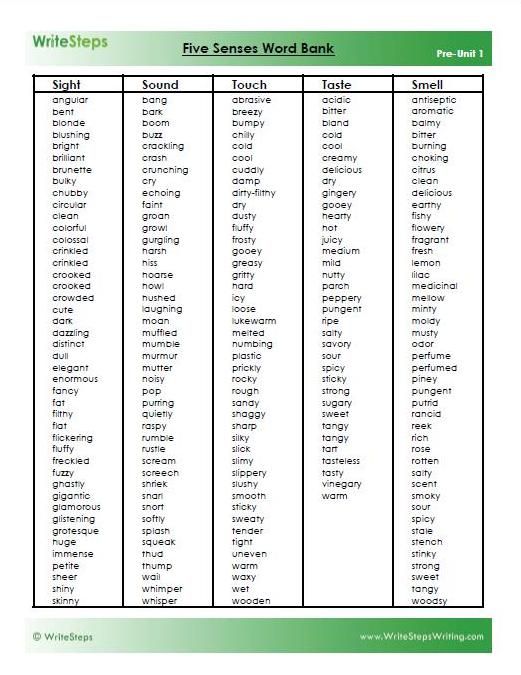
Sometimes we wish to enrich our descriptions of static objects. These items may not have much about them. Think of a black box, for example. On the face, it looks plain and boring. However, in exploring the box with our 5 senses, we can zoom in on the cracks and chips along the edges, at the roughness of the surface, at the smell of what’s inside the box.
Here are some tips to help you describe something using the 5 senses:
- Show, Don’t Tell – Instead of stating that a character is nervous, describe their sensory experiences. For instance, “Her palms felt clammy, and the bitter taste of anxiety coated her tongue as the cold draft whispered through the room.” This allows readers to feel the character’s emotions.
- Use Metaphors And Similies – Employ relatable similes and metaphors to create a strong visual image. Instead of saying “the garden was nice,” try “the garden burst with vibrant purples and reds, each flower a delicate brushstroke of nature’s artistry, filling the air with a sweet, earthy fragrance.”
- Engage All Senses – Ensure that your description covers more than just sight. For example, in a market scene, describe the “crisp, tangy scent of fresh apples,” the “hustle and bustle” of vendors calling out, the “rough, textured skin” of a mango, the “sweet, juicy taste” of a ripe peach, and the “kaleidoscope of colors” from different stalls.
- Be Specific – Specific details can make a description more authentic and engaging. Rather than saying “the room smelled bad,” describe the “stale scent of old socks and sour milk lingered in the air.”
- Incorporate Sensory Memories – Tap into common sensory experiences that readers can relate to. For example, “The crackling fireplace brought memories of cozy winter nights, with the smoky scent of burning logs and the warmth of the flames on their faces.”
By applying these tips, you can create rich, multi-sensory descriptions that immerse readers in your narrative, making scenes and emotions more relatable, especially when it comes to describing static objects.
Sometimes just describing how someone looks isn’t enough. We have to hone in on their features, like their coarse, unkept beard, or the smell that follows them round. Here are some great pieces of advice for describing people using the five senes:
- Auditory Cues – Describe the person’s voice and other sounds associated with them. For instance, “His deep, gravelly voice resonated like a distant thunderstorm, each word punctuated by a contagious, hearty laugh that filled the room.” This provides an auditory element that can make the character more memorable.
- Tactile Descriptions – Use touch to convey aspects of the person. For example, “His handshake was firm and calloused, a testament to years of hard labor, while the fabric of his worn flannel shirt was soft from countless washes.” This adds a tactile dimension to your description.
- Olfactory Imagery – Incorporate scents associated with the person. For instance, “She carried the faint aroma of lavender and vanilla, a soothing blend that lingered in the air long after she left the room.” This can evoke strong sensory associations and enhance the reader’s connection to the character.
- Gustatory Elements – While taste is less commonly used, it can be effective in specific contexts, especially in romance scenes . For example, “The kiss tasted of peppermint and coffee, a surprising combination that left a lingering warmth.” This can add a unique and intimate layer to your description.
By integrating these sensory elements, you can create a well-rounded and vivid portrayal of a person, making them more real and relatable to your readers.
If you’d like to learn more about sensory language and using these details in your writing , I recommend checking out my in-depth guide here. You can find a bunch more examples to help you further.
Thank you so much for checking out this guide on using the 5 senses in writing. I genuinely hope it’s been of use to you. Below, I’ve included some more guides on writing as well as places you can find extra 5 senses examples that you may find useful.
I may not have a sensory details generator on my site, but you can check out this random fantasy name generator tool to help with character creation
Learn more from my fantasy writing podcast
And to help you make your notes about the 5 senses, check out my guide to notebooks for writers
Check out my free book description generator here
If you’d like to learn more about words that begin with the letter E that you can use to describe someone, check out this guide. You can find words to help you describe someone in a positive or negative way, complete with definitions.
Below, you can find answers to some commonly asked questions when it comes to sensory descriptions, as well as more 5 senses examples.
“The icy wind rattled the ancient shutters upon the windows, stirring a shudder and setting every hair on her body on edge.”
This sentence uses sensory language to describe not just how the setting looks (from the rattling ancient shutters we see it’s an old possibly abandoned house), and crucially, we get a sense of how it feels to be in that setting, which is the main objective. It feels eerie, we feel the cold. We’re spooked.
What Are The 5 Senses In Writing?
Sensory description in fiction writing requires a writer to utilise the 5 senses – sight, sound, touch, taste and smell.
Incorporating the senses into your writing is simple. First, focus on what your characters can see in the scene. Then, one by one, think about what they can hear, smell, feel and taste. Assort your various descriptions and pick out your most powerful few.
The five senses are often used to draw a reader deeper into the scene, to feel closer to the characters. Writers do this by adding extra details focusing on the likes of touch and smell. This vivid writing that appeals to the senses can help immerse readers in our tales.
The best way is to pick up your favourite book and highlight any sentences or paragraphs that utilise the 5 senses. You’ll then have a bank of sensory details examples to call upon whenever you need them.
A sensory description is one that includes sight, sound, touch, smell and taste. Exploring sensory language examples gives you a greater ability to immerse your readers in the story and experience what the characters feel.
If you have any questions or need more examples of the 5 senses in writing, please contact me.
- Recent Posts
- The Best And Most Interesting Words To Describe A Book - June 29, 2024
- The Best Words To Describe Teachers - June 29, 2024
- The Best And Most Unique Words That Start With ‘E’ To Describe Someone - June 29, 2024
richiebilling
About author, related posts, the best and most interesting words to describe a book, the best words to describe teachers, the best and most unique words that start with 'e' to describe someone, 31 comments.
- Pingback: A guide to writing fight scenes – Richie Billing
- Pingback: 7 tips to help with editing – Richie Billing
When writing about the senses, authors should be careful to avoid FILTER words (saw, heard, felt, smelled, tasted) that detract from the scene. Don’t say, “I saw the sparkling water.” Instead, make it more vivid. Leave out “saw.” We know you saw it because you are describing it to us. Tell us instead more of WHAT you are seeing. “The sparkling water bubbled as a creature from below made its way to the surface.” Same goes with using “heard,” “felt,” “smelled,” and “tasted.” Omit those words and describe those senses so people can experience what the character is experience.
Terrific points! Thanks for taking the time to share!
- Pingback: Prose: Writing with the Senses - Celthric
- Pingback: A Guide To Writing Fight Scenes – Richie Billing
- Pingback: Getting To Grips With Passive Voice – Richie Billing
- Pingback: What Is Passive Voice? – Richie Billing
- Pingback: How Many Fantasy Subgenres Are There? - Richie Billing
- Pingback: 5 Mistakes Men Make Writing Women Characters - Richie Billing
- Pingback: The Magic Of Books | Celebrating World Book Day - Richie Billing
Thanks for sharing!
- Pingback: A Guide To Character Development In Writing | Richie Billing
- Pingback: Character Development - Writing Compelling Characters | Richie Billing
- Pingback: How To Write Dialogue | Richie Billing
- Pingback: A Guide To Siege Warfare - Richie Billing
- Pingback: What Is Prose Writing? [With Examples] - Richie Billing
- Pingback: Easy Tools Writers Can Use To Build Suspense - Richie Billing
- Pingback: Religion in Fantasy - Richie Billing
- Pingback: The Medieval Lord - The Complete Guide - Richie Billing
- Pingback: What Is Foreshadowing In A Story? [Definition and Examples] - Richie Billing
- Pingback: 493Ways to Describe Taste to Inspire Great Writing - Writing a great book
- Pingback: Details: AKA mastering the basics – Susanne Thomas
Thanks for the link!
- Pingback: 493 Ways to Describe Taste to Inspire Great Writing - Writing a great book
- Pingback: The Best Show Don't Tell Writing Examples - Richie Billing
- Pingback: How To Edit A Novel - Richie Billing
- Pingback: What Is Flash Fiction? - Em Dash Press
This was very helpful in as a source.
Read my debut fantasy novel, Pariah’s Lament
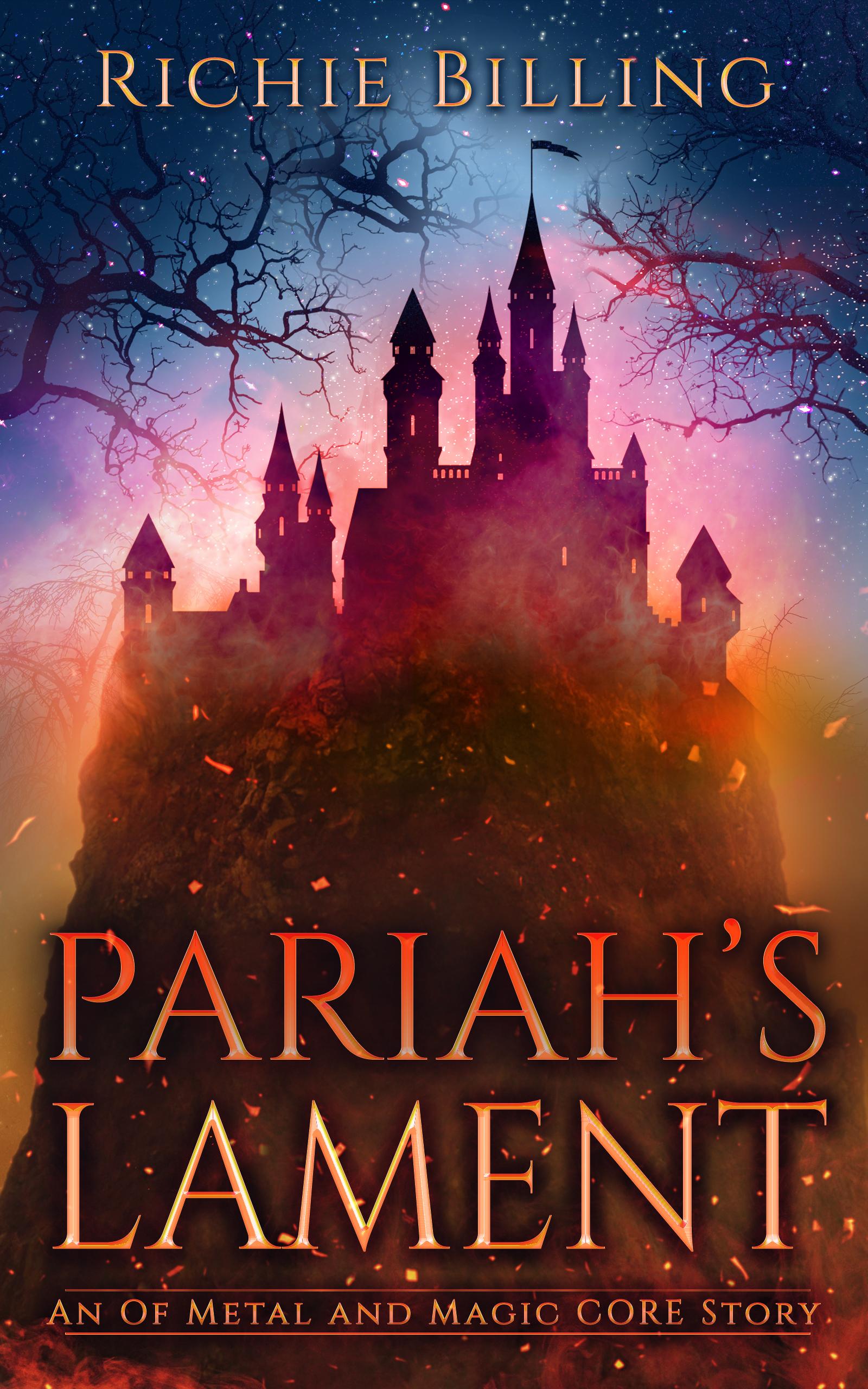
Sign Up For Free Stories!
Email address
Read my guide to writing fantasy, A Fantasy Writers’ Handbook
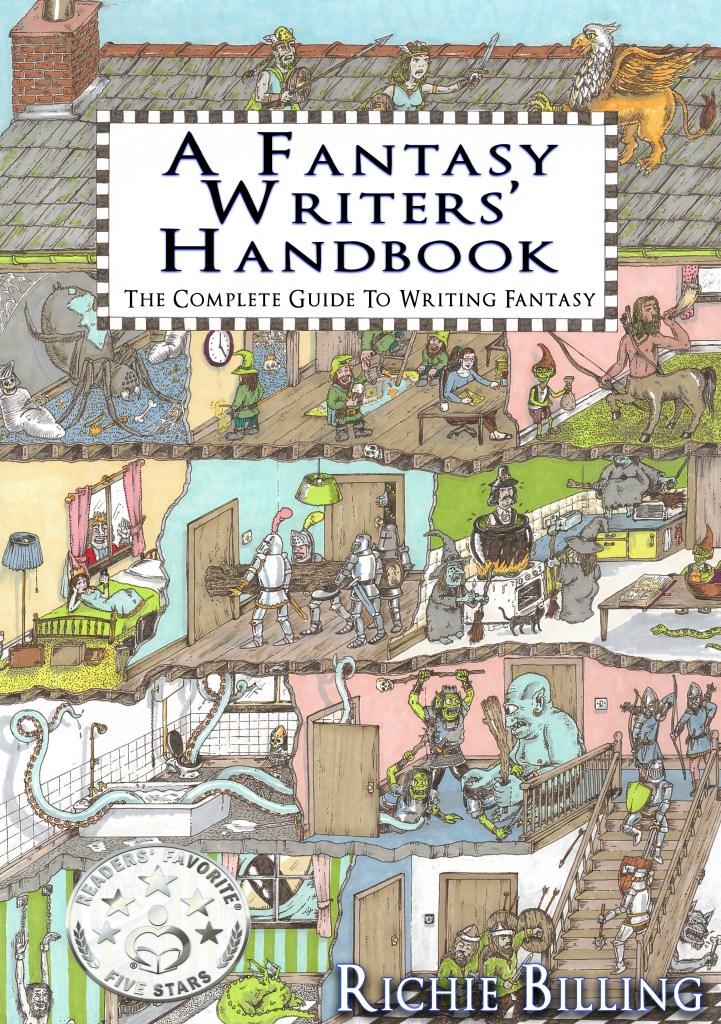
How To Create A Theme For A Story
A guide to siege warfare and tactics, quick links.
- Get In Touch
- Reviews And Testimonials
- Editorial Policy
- Terms Of Service
- Privacy Policy
- Cookies Policy
- Equality, Diversity And Inclusivity (EDI) Policy
- Affiliate Marketing Policy
- Payment Information

Follow On Social Media

Forgot your password?
Lost your password? Please enter your email address. You will receive mail with link to set new password.
Back to login

No thanks, close this box
- Skip to main content
- Skip to primary sidebar

Writing Tips Oasis - A website dedicated to helping writers to write and publish books.
10 Words to Describe Rain Ending in -ing
By A.W. Naves

Are you writing a rainy scene in your story? The following 10 words to describe rain ending -ing might be useful to you.
1. Drizzling
Hazing, sprinkling ; light rain falling in fine drops.
“The drizzling rain pattered softly against the windowpane.”
“She walked through the park, enjoying the drizzling rain against her skin.”
How it Adds Description
The word “drizzling” gives the perception of lightness and delicacy. This can help to create atmosphere and mood, setting the tone for the tale. It may evoke a feeling of tranquility, adding a layer of peacefulness to the tale and symbolizing a moment of introspection for the characters as they take a pause from the main action to enjoy the rain.
2. Splashing
Spattering, soaking ; to fall in drops by striking its surface.
“The rain was splashing all around us as we ran beneath a nearby bridge for cover.”
“The splashing rain put an unfortunate end to the picnic we had intended to enjoy by the lake.”
The word “splashing” brings a sense of movement and energy to the rain in the narrative, evoking a feeling of liveliness and playfulness. It also adds a visual factor to the narrative, allowing readers to imagine the water in motion and the resulting impact on the surroundings. Describing rain this way might be used to represent subsequent ripple effects in the plot.
Spraying, spritzing ; covering with a fine spray.
“The misting rain enveloped the landscape in a ghostly shroud that gave Monica the creeps.”
“He stood in the garden, letting the misting rain caress his face as he cried for his lost love.”
The word “misting” describes the rain in the form of a fine spray that gently envelops the surroundings. This can add a touch of mystique and enchantment to the story, evoking dream-like or otherworldly surroundings. It can symbolize transition or change, as the rain blurs the boundaries between different spheres or states of being.
4. Pattering
Tapping, drumming ; making a series of light, rhythmic sounds.
“The raindrops were pattering on the roof, creating a soothing lullaby for the night.”
“She closed her eyes and listened to the pattering rain, finding solace in its peaceful rhythm.”
The word “pattering” brings attention to the rhythmic sound of rain in the tale. It describes the rain as making a series of light, rhythmic sounds, resembling a gentle tap or drumming. This adds an auditory feature to the plot, enhancing the readers’ sensory experience. A comforting and soothing atmosphere can be created by this word, or it can act as a backdrop for quiet conversation.
5. Cascading
Flowing, rushing ; falling in abundance.
“The rain was cascading down the mountain pass, creating a mesmerizing display of nature’s power.”
“They stood at the edge of the cliff, watching the cascading rain create a curtain of water below.”
The word “cascading” emphasizes the abundant and continuous flow of the rain in the story. It portrays the rain as descending heavily, often with a sense of grandeur or force. This provides a visual and visceral element to the plot, portraying the rain as an awe-inspiring component of nature that may represent a pivotal moment or significant event.
6. Drenching
Soaking, saturating ; completely wetting, or filling with liquid.
“The drenching rain transformed the streets into shimmering rivers that were hard to traverse.”
“She stood outside the chapel of the funeral home, letting the drenching rain wash away her tears.”
The word “drenching” conveys the idea of rain that thoroughly wets and saturates everything in its path. This sort of rain creates an image of immersion and saturation, adding urgency and dramatic effect to the scene. It amplifies the impact of the rain on the characters and their surroundings and can symbolize cleansing, transformation, or emotional release.
Pounding, hammering ; striking with repeated forceful blows.
“The pelting raindrops hammered against the roof, creating a cacophony that drowned out all other sounds.”
“As the storm grew stronger, the pelting rain lashed at the windows, threatening to break through the glass.”
The word “pelting” expresses a sense of aggression and impact, suggesting that the raindrops are hitting with repeated and forceful blows. By using this term, the author creates a background filled with energy and tension. It adds urgency and danger, signifying a critical moment or a turning point where the characters face adversity or are pushed to their limits.
8. Showering
Gushing, flooding ; raining forcefully and continuously.
“The sky darkened ominously, and soon the rain started showering down, soaking everything in its path.”
“People hurriedly sought shelter as the showering rain turned the streets into a watery maze.”
The word “showering” suggests a relentless flow of rain, establishing a vivid image of a rainstorm that dominates the scene. The rain becomes an element that significantly impacts the setting and the characters within it. It can evoke a feeling of vulnerability or turmoil, as the characters navigate the challenges brought about by such an intense type of rain.
Torrential, gushing ; raining in a constant, steady stream.
“The clouds unleashed their fury, and rain began pouring from the sky, dousing everything in sight.”
“The pouring rain transformed the streets into makeshift canals, making it impossible to walk without getting soaked.”
The word “pouring” describes rain that falls steadily in a continuous and abundant downpour. This can become a catalyst for action, driving the characters to respond to challenging conditions. It adds a layer of realism and sensory detail to the story, immersing the reader in the torrential environment.
10. Storming
Raging, tempestuous ; heavy rain accompanied by high winds, thunder, and lightning.
“The sky grew dark as the storm clouds gathered, and soon it began storming with fierce rain and booming thunder.”
“The storming weather rattled the windows and sent shivers down their spines as they huddled indoors.”
The word “storming” signifies a weather event that is tumultuous and intense. By incorporating this term, the writer creates a scene of heightened drama and danger. The rain becomes a powerful force of nature that significantly impacts the setting and the characters within it. It sets a tone of urgency, fear, or turmoil, as the storm unleashes its full force.

7 Ways To Write About The Weather
Writing about the weather is boring? No way! We all check up on the weather several times each day. It decides so much of our lives. It should be part of your writing, too. This article offers you seven ways to write about the weather.
I love talking about the weather. It decides what I wear, how I travel (if I travel at all), my health, and even my mood . That’s not counting ‘bad hair days.’
Weather forecasts are important for farmers, for utility companies, and they help protect our lives and property. If you could control the weather, you’d get to decide who goes hungry in this world and who doesn’t. That’s how important the weather is. So, where’s the weather in your writing?
Many writers tend to make weather take the backseat. They don’t realise what the weather can do for them. So, let’s find out!
How to Use The Weather In Stories
Here are 7 ways to use the weather in your stories. We’ll start with the most common ones (also the most boring) and work our way up to the exciting stuff.
1. Weather As A Conversation Starter
‘What’s the weather like?’ is the world’s number one question. Whatever you say or ask about the weather can be used as a conversation starter. It’s that universal. That’s also where the danger lies. Talking about the weather is a cliché .
So, use these classic phrases sparingly (or not at all). If you absolutely need to, then make your characters aware of their need to use a cliché. Here’s an example:
Example: He just had to speak to the girl at the bus stop. But how could he make her talk? His brain was a blank. He knew he resorted to a cliché when he blurted out: ‘Nice weather, eh?’
Here, using the cliché is needed to show how desperate the character is to start a conversation.
2. Weather As A Backdrop
The most common use of the weather in fiction is as an inconspicuous element of the setting in sentences like this one:
Example: On a sunny day, Jane went to the public library.
Not exciting, right? That’s because the weather doesn’t do anything. It’s stated as a fact, obvious and boring. It’s telling. How about showing it instead?
Example: ‘A T-shirt is enough,’ Jane thought, glad to put her cardigan aside, as she left the house to go to the public library. Who needed extra baggage on a day like this?
In this example, the character experiences the weather. We even learn how that affects Jane’s mood. Much better, isn’t it?
3. Weather As A Sensual Experience
Let’s see if we can provide even more showing (check out these ‘ 101 Words To Describe the Weather ’). Weather is how we experience the force of the elements. That makes it intensely sensual: rain feels wet and cold, and it makes us depressed. Sunshine is the opposite.
There’s more. Humidity causes hair to get frizzy, and hairdos to collapse (‘bad hair days’). Many people get migraines under certain weather conditions. Air pressure in combination with temperature changes people’s blood pressure. Mental health can also be affected by the weather . Talk about feeling ‘under the weather!’
So, how about describing how the weather feels on your characters’ skin? How does it affect their mood?
4. Weather As Foreshadowing
As authors, we’re in control of the story, we steer our readers’ attention. Most readers appreciate it when we do this in a subtle way. That’s called foreshadowing . Authors hint at future events by creating an atmosphere (pun intended). Let’s look at our example from above and include the weather. Watch what happens at the end.
Example : ‘A T-shirt is enough,’ Jane thought, glad to put her cardigan aside, as she left the house to go to the public library. Who needed extra baggage on a day like this? She skipped down the street. At a traffic light, she looked up at the sky. ‘Funny,’ she thought, ‘that cloud wasn’t there when I left home.’
As readers, we expect that little cloud to grow to grow into a storm. This storm can happen literally (as setting), or emotionally. That little cloud could easily foreshadow difficult emotions.
Just by describing this change of weather, you plant a little seed for the reader to expect a future event. This, of course, also works in the other direction. Just think of the Bible when Noah saw the sky clearing up. He knew that God’s anger was lessening as well.
5. Weather As A Source Of Conflict
Braving the weather means we withstand the elements. This can create situations where a cast of characters needs to show their true colours.
Imagine people on a deserted island in the Caribbean. Everybody gets along well when the sun is shining, and fish are plenty. Now introduce a thunderstorm. You will have people fighting for shelter and the only remaining fish.
6. Weather As A Motif
In the Hollywood movie L.A. Story ’ (1991), actor Steve Martin plays a TV weatherman. He prerecords his forecasts because the weather in L.A. is always the same. His usual comment ‘Sunny and 72’ becomes a funny catchphrase in the story.
That way, the weather is introduced as the main character’s occupation and is used as a motif throughout the movie. It starts as a cliché, which becomes the source of ridicule (the temperature in his forecasts doesn’t even change one degree). In the end, the weather finally acts almost like a character (please read on).
7. Weather As An Acting Force
This is where the weather becomes most interesting! Let’s go back to the movie ‘L.A. Story.’ The TV weatherman falls in love with Sara, who at some point wants to leave the city by plane. But the story has shown us so far that these two are meant to be together. How can this be resolved?
The weather makes it possible. A rainstorm prevents the plane from taking off, and Sara is reunited with her weatherman. The weather needed to take action, or the narrative would not have reached a happy ending.
This is not the only story in which the weather took centre stage. Look at the classics! Many ancient gods had attributes connected to the weather: Zeus had bolts of lightning, and Tempestas was the Roman goddess of storms and sudden weather (guess where the word ‘tempest’ comes from!). The Egyptians had four gods for wind (one for each direction). In Russian folklore, Santa Claus is known as Father Frost. These classic characters act through the weather!
The weather is ultimately the way humans experience the force of the elements. We can all choose to ignore the weather, but we can’t escape it.
The Last Word
Make the weather work for your stories. Don’t just mention it; let it give an extra layer to your setting, increase the showing, add conflict, and even function as if it were a character . I hope I have been able to show just how exciting the weather can be.
There’s one more thing: the weather can take over your language. There are so many idioms and phrases connected to the weather! If you’d like to know more, then please watch out for my next post. It’ll include a cheat sheet with ’ 80 Weather Expressions.’

By Susanne Bennett.
Susanne is a German-American writer who is a journalist by trade and a writer by heart. After years of working at German public radio and an online news portal, she has decided to accept challenges by Deadlines for Writers . Currently she is writing her first novel with them. She is known for overweight purses and carrying a novel everywhere. Follow her on Facebook .
More Posts From Susanne
- 7 Steps To Celebrate ‘The End’
- How To Write A Cosy Mystery
- Punctuation For Poets
- The Powerhouse Of Writing 6: Colons, Semicolons, & Dashes
- The Powerhouse Of Writing 5: Quotation Marks
- The Powerhouse Of Writing 4: The Question Mark
- The Powerhouse of Writing 3: The Exclamation Mark
- The Powerhouse of Writing 2: The Comma
- The Powerhouse Of Writing 1: The Full Stop
- How To Play Surrealist Word Games
Top Tip : Find out more about our workbooks and online courses in our shop .
- Featured Post , Setting , Susanne Bennett
© Writers Write 2022
- How to Cite
- Language & Lit
- Rhyme & Rhythm
- The Rewrite
- Search Glass
How to Describe a Storm in Writing
Whether they're ruthless tornadoes or torrential hurricanes, storms can add atmosphere and conflict to a personal narrative or story. The use of vivid description is a crucial tool for bringing these weather phenomena to life on paper and moving your plot forward. Using figurative language and active verbs can help you place readers right in the middle of the rain, wind and thunder.
Mighty Metaphors and Storm Similes
A simile is a type of description that makes an explicit comparison between two things using the words "like" or "as." A metaphor, by contrast, is a direct comparison that does not use these words. You can use these devices to create surprising descriptions of your storm. If you're describing a hailstorm, for example, you might use a simile to write, "The hailstones clattered to the ground like marbles spilled from a box." To use a metaphor, you might write, "An avalanche of hailstones fell from the sky."
The Sound of Storms
In real life, the sounds of nature are often key indicators of approaching storms. You can bring these sound effects to your descriptions by using onomatopoeia, a device where words mimic the sounds of their meaning. For example, if a thunderstorm figures prominently in your story, the thunder could "rumble" or "boom," rain could "patter" against the windows" and wind could "rush" across a field. Try making a list of all the sounds the storm in your narrative might involve and brainstorm onomatopoeic words to describe them.
The Character of Storms
If a storm is central to your story's conflict, you might consider having the weather literally take on a life of its own. Personification occurs when a writer gives human characteristics, such as actions and emotions, to an inanimate object. If your characters are trapped in open water during a hurricane, you might write, "The angry waves smacked against the side of the boat." Although water can't feel anger, the description of the waves as "angry" adds emotional texture and characterization to the storm.
Vivid Verbs
Because bad weather can often get out of control, describing a storm is not the time to skimp on verb usage. Weak verbs, such as "was" or "were," drain your descriptions of energy rather than infuse them with detail. Using specific, active verbs for the storm's motion gives readers a more detailed image of the story's events. For example, the sentence, "The dark sky was lit up by lightning," is a good start, but revising it to include an active verb can make the description even more forceful: "Lightning flashed across the sky."
- Western Michigan University: Basics of Metaphor and Simile
- Read Write Think: Onomatopoeia
- Universal Design for Learning: Literary Devices: Personification
- Writing Commons: Avoid Unnecessary "To Be" Verbs"
Kori Morgan holds a Bachelor of Arts in professional writing and a Master of Fine Arts in creative writing and has been crafting online and print educational materials since 2006. She taught creative writing and composition at West Virginia University and the University of Akron and her fiction, poetry and essays have appeared in numerous literary journals.
Best Descriptive Writing Sites Describing the beauty of nature
Archive for the ‘ describing storms ’ tag, describing the rain 115 comments.
Describing the rain. I hope to give you all the information you need to write a descriptive scene using the rain.My new book ‘Writing with Stardust’, is now available on Amazon. It is the ultimate descriptive guide for students and teachers. Just click on any of the book images below.
The FULL post with 5 levels can be viewed in PDF by clicking here:
DESCRIBING THE RAIN
LEVEL 1 I looked out the window. The sky was tar-black and the large clouds were moving towards me. I heard a tapping on the window and then it became a pitter-patter. People ran for cover outside and umbrellas were opened as the clouds spat out their beads of water. Puddles began plinking as the rainfall became heavier. The roofs of the cars danced with spray and I could hear the murmuring of the rain through the window. It sounded like the buzzing of angry bees.
For a Level 2 assignment, more detail should be added. Imagine the effect of the rain on the trees and include more detail on the sky and clouds. At the end of the paragraph, try to write something about the sun coming out. This will vary your writing style.
LEVEL 2 I quickened my pace as the clouds began to gather in the sky. Up to now, the sky had been postcard-perfect, but it was changing. The beautiful cocktail-blue shade was beginning to darken into gravel-grey. Large pillows of cloud were forming, blotting out the old-gold colour of the sun. I got the first splatter of rain when I was halfway across the meadow. I took shelter under an old oak, hoping that I could see out the shower. Droplets of moisture began to drip from the leaves. They were sprinkling onto the grass like a gardener’s hose. Then the rainfall became more intense. A wall of rain moved over the oak and the drops were drumming against the canopy. So much rain was falling that the sound blurred into one long, whirring noise. It reminded me of the rotor blades on a helicopter. Eventually, the noise lessened and the drops faded into a musical chime. The sun came out again, casting slanted beams of light across the meadow. Steam rose slowly from the grass. It rose up eerily and drifted mist-like towards the molten-gold sun. The image was so vivid that it stayed with me all the way home.
Level 3 should conjure up a scene where the rain’s effect can be explored in more detail. The words should get more complex also. An idea might be to visualise a forest scene in autumn, for example. Transport yourself there and describe the colours, the sensations and the sounds of the rain.
LEVEL 3 It began as a whispering in the air. The day had been beautiful and the sky was like a dome of plasma-blue. The clouds had looked like airy anvils drifting under the gleaming disc of sun. We had put our tent up just before the Reaper’s moon of autumn appeared over the trees. The moon seemed to turn the leaves into a flaming patchwork of colours: scorching-yellows, lava-reds and burnished-browns. It added an alien glamour to a perfect scene. We heard a greedy thrush, snail a-tapping on rock; he finished his supper before fluttering into the owl-light of the forest. The mournful cry of a lonely fox echoed through the vault-still silence of the trees. A huffing wind rose up then, stirring the flaps of our tent. A tinkling sound came to our ears as the first pearls of rain dropped onto the leaves. The sound was like the glassy clinking of a champagne flute, lilting and clear. A sheet of rain passed over us and the sound intensified. The noise on the tent was like the phut-phut-phut that ripened nuts make when they hit the ground. It wasn’t the soft, sodden, swollen drops of spring we were hearing; it was like ball-bearings were hitting the canvas roof with force. We could also hear an occasional ker-plunking sound. It was caused by the rainwater gathered on the tent falling to the ground in a great swash of release. The thermometer plunged as we huddled together and shivered in the tent. For a brief moment, we thought that we might be doomed adventurers, destined to get swept away in a mighty flood. We needn’t have worried. The curtain of rain passed over by the time dawn arrived. An explosion of birdsong erupted from the dripping trees and it was if the rain had never been.
A Level 4 assignment might involve a degree of philosophy. You can discuss how the rain is both life giving and life threatening. The metaphors should be more creative and the turn of phrase made more enriching.
LEVEL 4 ‘The sun enables life. The rain grants it safe passage’. The winter sky is a widow’s sky, bedarkened and weeping. The clouds are churlish and kraken-cruel. They cough out great gouts of water and thunking balloons of sopping moisture. It teems down in a biblical deluge, flooding the rivers, drowning the fields and overflowing the dams. It is a Noah’s-Ark cataclysm of rain, an unending cataract of water sluicing from the sky. Trees are uprooted, cars go bobbing by and entire villages disappear under a frothy lather of suds. Cities are overwhelmed and electricity blackouts have people living in fear of the unknown. The rain is incessant. It snaps and crackles like bracken pods in a bush fire. The flood-gates in the sky have been opened and no-one is there to close them back up, it seems. Is this the scene from a sci-fi movie? Is it a terrifying vision of a future world? Indeed it is not. It is the new reality for people from Missouri to Manchester, from Mumbai to Melbourne. The rain is man’s new enemy, according to news reports. It is public enemy number one. It has betrayed man and is now the most destructive arrow in nature’s quiver. The rain has a bad ‘rep’ at the moment. Is this how it should be viewed? Maybe we are forgetting the gifts it bestows upon us. The spring sky is a fragile, pellucid-blue. The clouds are frail and angel-white. They are carried on a light, ruffling breeze. The soil of Mother Earth is titanium hard and in need of nourishment. A misty rain falls down. It is as frail as a Scottish smirr and its misty dew feels like warm butter melting on a face. As it falls, it unlocks the glassy fingers of winter’s frosty fist, one by one. Flowers slowly unfurl in the meadows and ripple like coral arms at low tide. The rivers exhale with a murmurous purr of satisfaction. The spring rains are here and they are as sinless and glistening as an angel’s tears. The summer sky is neon-blue and vibrant. The sun-crisped flowers of the meadow are wilting. They gape at the tufty clouds and beg for their parched petals to be given one more shot of insulin. The clouds oblige and rain descends in little gleam-drops of silver. If you were to stand in the meadow, the drops would feel as sparkly and effervescent as champagne bubbles hitting your skin. The sound of the rain is a harmonic thrumming, nature’s white noise. Silver trickles of water seep into the soil, renewing the life-roots of the plants beneath. A homely, baked-earth smell rises from the land as it is washed and cleansed by the dewy tears of summer rain. Petrichor, the smell of the first rains after a dry spell, rises like a miasma. It is a jasmine-and-gingerbread fragrance, warm and fresh, and it laves the land with sweetness. The farmer is happy. The rain has giveth what the sun would taketh away. The autumn sky is dark and vengeful. Steaming shrouds of cloud coil and writhe. Then an unearthly caterwauling sound fills the air. The wind whips up into frenzy. It is a shrieking, keening omen of the carnage to follow. The clouds race across the sky, thrumming with the charged energy they are desperate to release. It starts with big, sopping drops of moisture. They are wild and indiscriminate, plump missiles of mass destruction that splatter onto the soft soil. The topsoil turns into slushy goo, but it doesn’t matter. The harvest has been taken in and the farmer stokes the glowing coals with a poker and a sigh of contentment. The rain is sissing and hissing off the roof, teeming onto the spongy earth. The farmer thinks about how most gifts come with a cost. He shudders at the thought of another winter, but counts his blessings that the rain has once again ensured his livelihood. To him, the rain is the nectar of the gods and the serum of the sky. He is neither philosopher nor ancient mariner, neither writer nor jungle adventurer, yet he understands the importance of nature’s bounty. If beauty is God’s signature, then rain is his final flourish.
Level 5 is available to read on my new book called ‘Writing with Stardust’ which is on Amazon. It also gives the sounds of rain in more detail. Everything on my blog posts AND MUCH, MUCH MORE are included in this book. There are 20 chapters jam-packed with colours, sounds, scents, beautiful phrases and practical tips. It also comes with a fill-in-the-blanks workbook. Hopefully, this post will help those who need guidance on describing the rain. God bless and good luck with your writing!
For much more of the above, please check out my book Writing with Stardust by clicking on the book images..

Share this:
Posted February 16, 2013 by liamo in Uncategorized
Tagged with adjectives for the rain , best rain descriptions , describing storms , describing the rain , the sound of rain , walking in the rain
- Search for:
- Describing a Beautiful Black Woman
- New Joke Book Free for Teachers and Students
- Describing a lake video
- Blue-Sky Thinking 1- Free Book
- Ireland in 8,000 B.C.
Descriptive Posts
- Entries feed
- Comments feed
- WordPress.com
- 9,854,148 hits
- descriptive writing
- English comprehension for Junior Cert
- free descriptive writing books
- The Beach At Dawn
- Uncategorized
Follow Blog via Email
Enter your email address to follow this blog and receive notifications of new posts by email.
Email Address:
Recent Posts
- The passenger pigeon: a comprehension worksheet
- Describing Autumn Worksheets (11-15-year olds)
- Describing Curraghmore Estate (Updated)
- A descriptive writing comprehension for 11-15 year olds
- Describing a Beautiful Woman worksheets
- Describing a meadow
- 2014 in review
- Best descriptive words for an essay
- Describing a handsome man
- Free book for english teachers
- Teaching life skills to teenagers
- Describing a calm sea
- Describing life in the trenches
- How to write a descriptive essay
- Describing the genesis gene in all of us.
- Making a personal statement
- Describing a tree
- Describing a cat
- Best horror sentences: monsters, mist, deserts, dark forests and thunder and lightning.
- Fish, frogs and cows falling from the sky?- from the book ‘Blue-Sky Thinking’
- Best descriptive sentences: rivers, mountains, beaches, waterfalls, forests, lakes and the 4 seasons.
- Teaching different intelligence types: from the book ‘Blue-Sky Thinking’.
- FREE CREATIVE WRITING BOOKS FOR TEACHERS
- Free poetry lesson plans for secondary students
- JCSA free resources: from the book ‘Blue-Sky Thinking’
- Teaching the five senses
- Describing the four seasons: from the book ‘Writing with Stardust’
- Teaching descriptive writing
- Teaching animal sounds
- Sounds of the city: From the book ‘Blue-Sky Thinking’
- Junior Cycle Student Award English Books
- Teaching Flash Fiction: From the book ‘Blue-Sky Thinking’
- Free diary entry
- Junior Cycle Student Award English Resources
- Descriptive Writing Narrative Styles
- Junior Cycle Student Award English books
- How to self-publish a novel
- Describing the seaside
- Teaching Point of View to students
- How to Plan a Short Story
- Best Creative Books For Teachers
- Describing a Dark Forest
- Best descriptive writing books
- Best Creative Writing Books
- Best Descriptive Sentences
Create a free website or blog at WordPress.com.

- Already have a WordPress.com account? Log in now.
- Subscribe Subscribed
- Report this content
- View site in Reader
- Manage subscriptions
- Collapse this bar

26 Metaphors for Weather: Exploring the Vivid Language of Nature
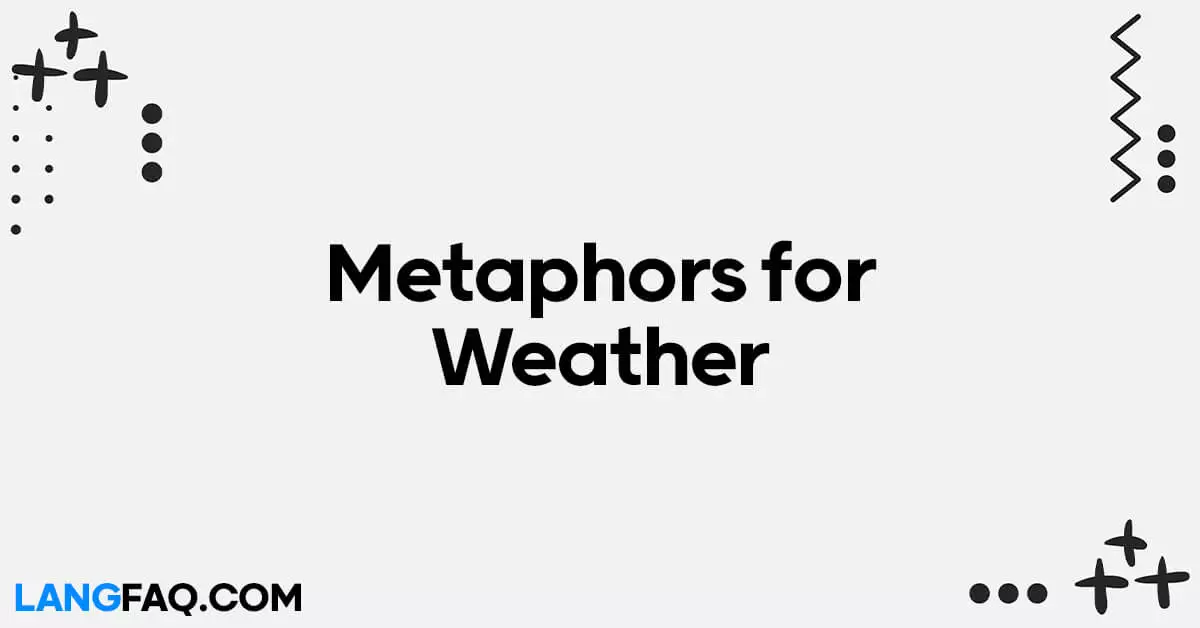
Share this post:
Weather has always fascinated us, inspiring poets, writers, and everyday conversations. It’s amazing how the elements can be described in countless ways, each metaphor painting a unique picture of nature’s moods. In this article, we delve into the world of weather metaphors, exploring 26 captivating expressions that bring the elements to life.
26 Metaphors for Weather
- The Sky’s Tears – Describing rain as “the sky’s tears” conveys a sense of sadness or melancholy.
- A Blanket of Snow – Snowfall can be compared to a cozy blanket covering the ground.
- The Roar of Thunder – Thunderstorms are nature’s orchestra, with thunder as its powerful percussion.
- The Whispering Wind – Gentle breezes are like whispers from the wind, carrying secrets and stories from afar.
- The Sun’s Embrace – Sunshine can be described as the warm and comforting embrace of the sun.
- Mist’s Mysteries – Fog and mist can shroud the world in mystery, concealing what lies beyond.
- The Icy Grip of Winter – Winter’s chill can be compared to an icy grip, as it freezes everything in its path.
- Dancing Raindrops – When raindrops fall , they dance on surfaces, creating a rhythmic and soothing melody.
- The Breath of Autumn – The cool, crisp air of autumn is like a refreshing breath of nature.
- The Fiery Sunset – A sunset can be likened to a fire in the sky, painting the horizon with vibrant colors.
- The Hush of Snowfall – As snow falls gently to the ground, it creates a hushed atmosphere.
- The Wrath of the Storm – Storms can be described as nature’s fury, unleashing its anger upon the world.
- The Gentle Caress of Spring – Spring’s arrival is like a gentle caress, awakening the world from its slumber.
- The Ocean’s Sigh – Waves crashing on the shore can be compared to the deep sighs of the ocean.
- The Whispers of the Leaves – Rustling leaves in the wind are like whispers from the trees, sharing their secrets with the world.
- The Velvet Night – A clear, starry night can be described as velvety, soft, and full of dreams .
- The Embrace of the Tides – High tides can be likened to the sea’s loving embrace, reaching out to touch the shore.
- The Song of the Birds – Birdsong in the morning is like nature’s symphony, announcing the arrival of a new day.
- The Scent of Rain – The earthy smell that follows rain can be compared to nature’s perfume.
- The Breath of Summer – Summer’s warmth is like a gentle breath, wrapping us in its comforting embrace.
- The Laughter of Sunshine – Sunshine can be described as nature’s laughter, bringing joy and brightness.
- The Cradle of Clouds – Clouds can be seen as a cradle, rocking the sky to sleep with their gentle movements.
- The Velvet Touch of Dusk – Dusk, with its soft, fading light, is like a velvet touch, signaling the end of the day.
- The Symphony of Rainbows – Rainbows are nature’s symphony of colors, a beautiful and harmonious display.
- The Whispers of the Stars – The night sky, adorned with stars, seems to whisper the secrets of the universe.
- The Fury of a Hurricane – Hurricanes can be likened to nature’s fury, a powerful and destructive force.
| Metaphor | Meaning | Example Sentence |
|---|---|---|
| The Sky’s Tears | Rain symbolizing sadness | “The sky’s tears fell as she grieved.” |
| A Blanket of Snow | Snowfall as a cozy covering | “The town was covered in a blanket of snow.” |
| The Roar of Thunder | Thunderstorms as nature’s orchestra | “The roar of thunder shook the entire house.” |
| The Whispering Wind | Gentle breezes as whispers from the wind | “The whispering wind carried tales of the past.” |
| The Sun’s Embrace | Sunshine as a warm and comforting embrace | “She basked in the sun’s embrace on the beach.” |
| Mist’s Mysteries | Fog and mist shrouding the world in mystery | “The mist’s mysteries concealed the path ahead.” |
| The Icy Grip of Winter | Winter’s chill compared to an icy grip | “The icy grip of winter froze the lake solid.” |
| Dancing Raindrops | Raindrops creating a rhythmic melody | “The dancing raindrops played on the roof.” |
| The Breath of Autumn | Autumn air as a refreshing breath of nature | “She inhaled the breath of autumn in the forest.” |
| The Fiery Sunset | A sunset resembling a fiery spectacle | “The fiery sunset painted the sky with red.” |
| The Hush of Snowfall | Snowfall creating a hushed atmosphere | “The hush of snowfall blanketed the city.” |
| The Wrath of the Storm | Storms as nature’s fury | “The wrath of the storm unleashed .” |
| The Gentle Caress of Spring | Spring’s arrival as a gentle caress | “The gentle caress of spring awakened the flowers.” |
| The Ocean’s Sigh | Waves as deep sighs of the ocean | “The ocean’s sigh was heard from the shore.” |
| The Whispers of the Leaves | Rustling leaves as whispers from the trees | “The whispers of the leaves calmed her soul.” |
| The Velvet Night | A clear, starry night described as velvety | “The velvet night was perfect for stargazing.” |
| The Embrace of the Tides | High tides compared to the sea’s loving embrace | “The embrace of the tides reached the shoreline.” |
| The Song of the Birds | Birdsong in the morning as nature’s symphony | “The song of the birds welcomed the day.” |
| The Scent of Rain | The earthy smell after rain as nature’s perfume | “The scent of rain refreshed the garden.” |
| The Breath of Summer | Summer’s warmth as a gentle breath | “The breath of summer kissed her skin.” |
| The Laughter of Sunshine | Sunshine symbolizing nature’s laughter | “The laughter of sunshine filled the park.” |
| The Cradle of Clouds | Clouds rocking the sky like a cradle | “The cradle of clouds lulled the day to sleep.” |
| The Velvet Touch of Dusk | Dusk described as a velvety, soft touch | “The velvet touch of dusk settled over the city.” |
| The Symphony of Rainbows | Rainbows as a symphony of colors | “The symphony of rainbows graced the sky.” |
| The Whispers of the Stars | The night sky’s secrets resembling whispers | “The whispers of the stars filled the night.” |
| The Fury of a Hurricane | Hurricanes as nature’s powerful fury | “The fury of the hurricane wreaked havoc.” |
These metaphors add vividness and depth to descriptions of weather, allowing readers to visualize and connect with nature in a unique way.
1. The Sky’s Tears
Alternative Words/Phrases:
- Heavenly Weeping
- Celestial Crying
- Atmospheric Sorrow
Explanation: “The Sky’s Tears” is a metaphor that poetically describes rain as if the sky is shedding tears. It conveys a sense of sadness or sorrow associated with rainy weather.
Scenario: Formal Context: In a formal email discussing a weather-related event or news, you can use this metaphor to add a touch of literary flair. For example, “Dear colleagues, due to the recent inclement weather, the sky’s tears have been relentless, causing flooding in several areas.”
Informal Context: When chatting with friends about a rainy day, you might say, “I love how the sky’s tears make everything feel fresh and clean.”
Example Sentence: “The sky’s tears fell gently upon the garden, nurturing the flowers and bringing life to the earth .”
2. A Blanket of Snow
- White Comfort
- Winter’s Cover
- Frosty Blanket
Explanation: “A Blanket of Snow” compares snowfall to a cozy covering that blankets the ground, creating a serene and peaceful landscape.
Scenario: Formal Context: In a formal report about winter weather conditions, you can use this metaphor to describe the extent of snowfall. For instance, “The region experienced a substantial blanket of snow, resulting in travel disruptions.”
Informal Context: When sharing your excitement about the first snowfall with friends, you might say, “Waking up to a world covered in a blanket of snow is pure magic!”
Example Sentence: “The town was enveloped in a pristine blanket of snow, muffling the sounds of the bustling city.”
3. The Roar of Thunder
- Thunder’s Symphony
- Sky’s Drumroll
- Nature’s Percussion
Explanation: “The Roar of Thunder” likens thunderstorms to a powerful orchestra, with thunder serving as its percussion instrument. It conveys the intensity and dramatic nature of thunderstorms.
Scenario: Formal Context: In a scientific paper discussing atmospheric phenomena, you can use this metaphor to describe thunder’s role. For example, “Thunder, often referred to as the roar of thunder, is a result of rapid air expansion during lightning strikes.”
Informal Context: When chatting with friends during a thunderstorm, you might say, “Did you hear that incredible roar of thunder? It felt like the sky’s drumroll!”
Example Sentence: “The roar of thunder echoed through the valley, shaking the ground with its sheer power .”
4. The Whispering Wind
- Breezy Whispers
- Zephyr’s Secrets
- Gentle Murmurs
Explanation: “The Whispering Wind” compares gentle breezes to whispers from the wind, suggesting a sense of mystery and tranquility in the air.
Scenario: Formal Context: In a travel brochure describing a serene destination, you can use this metaphor to evoke a sense of calm. For instance, “Visit our resort and experience the soothing embrace of the whispering wind.”
Informal Context: When enjoying a peaceful evening with friends outdoors, you might say, “I love how the whispering wind rustles through the trees, it’s so relaxing.”
Example Sentence: “As the sun set, the whispering wind carried the scent of blooming flowers, creating a serene atmosphere.”
5. The Sun’s Embrace
- Sunshine’s Warmth
- Radiant Embrace
Explanation: “The Sun’s Embrace” portrays sunshine as a warm and comforting embrace from the sun. It conveys the idea of light, happiness, and positivity.
Scenario: Formal Context: In a motivational speech, you can use this metaphor to inspire optimism. For example, “Just as the sun’s embrace brightens our day, let positivity embrace your life.”
Informal Context: When complimenting a friend’s cheerful demeanor, you might say, “Your smile feels like a ray of the sun’s embrace!”
Example Sentence: “As I stepped into the sunlight, I felt the sun’s embrace warming my skin and lifting my spirits.”
6. Mist’s Mysteries
- Enigmatic Fog
- Fog’s Secrets
- Veil of Mystery
Explanation: “Mist’s Mysteries” describes fog and mist as shrouding the world in mystery, concealing what lies beyond. It suggests an element of intrigue and uncertainty.
Scenario: Formal Context: In a mystery novel’s atmospheric description, you can use this metaphor to set the mood. For instance, “The mist’s mysteries enveloped the ancient castle, hiding its secrets.”
Informal Context: When describing a foggy morning walk, you might say, “Walking through the mist’s mysteries felt like exploring a hidden world.”
Example Sentence: “The mist’s mysteries veiled the forest, creating an eerie and enchanting ambiance.”
7. The Icy Grip of Winter
- Winter’s Chill
- Frosty Embrace
- Freezing Grasp
Explanation: “The Icy Grip of Winter” characterizes winter’s cold as an icy grip, emphasizing its ability to freeze everything in its path.
Scenario: Formal Context: In a safety advisory about winter weather, you can use this metaphor to highlight the dangers of extreme cold. For example, “Beware of the icy grip of winter, which can pose severe health risks.”
Informal Context: When describing a particularly cold day, you might say, “I could feel the icy grip of winter as I stepped outside.”
Example Sentence: “The icy grip of winter turned the lake into a crystal-clear wonderland, with its surface frozen in time.”
8. Dancing Raindrops
- Rain’s Ballet
- Precipitation’s Waltz
- Liquid Choreography
Explanation: “Dancing Raindrops” portrays raindrops as gracefully dancing when they fall, creating a rhythmic and soothing melody.
Scenario: Formal Context: In a weather documentary, you can use this metaphor to describe rain’s beauty. For instance, “Watch as the dancing raindrops create a mesmerizing display in the heart of the storm.”
Informal Context: When reminiscing about a rainy day with a friend, you might say, “I sat by the window, listening to the soothing music of the dancing raindrops.”
Example Sentence: “The dancing raindrops on the rooftop provided a tranquil background score to the evening.”
9. The Breath of Autumn
- Fall’s Exhale
- Autumn’s Sigh
- Seasonal Breeze
Explanation: “The Breath of Autumn” likens the cool, crisp air of autumn to a refreshing breath of nature, symbolizing the changing of seasons.
Scenario: Formal Context: In a travel brochure promoting autumn getaways, you can use this metaphor to emphasize the rejuvenating aspects of the season. For example, “Experience the invigorating breath of autumn at our scenic retreat.”
Informal Context: When discussing your favorite season with friends, you might say, “There’s something magical about the breath of autumn, with its cool, crisp air.”
Example Sentence: “As I walked through the forest, I could feel the breath of autumn on my skin, a reminder of the changing seasons.”
10. The Fiery Sunset
- Sunset’s Blaze
- Dusk’s Inferno
- Evening’s Fireworks
Explanation: “The Fiery Sunset” describes a sunset as resembling a fire in the sky, with vibrant colors painting the horizon.
Scenario: Formal Context: In an art critique, you can use this metaphor to analyze a painting of a sunset. For instance, “The artist captured the intensity of the fiery sunset with bold strokes of color.”
Informal Context: When sharing your admiration for a stunning sunset with a friend, you might say, “Tonight’s fiery sunset was like nature’s own fireworks display!”
Example Sentence: “The fiery sunset bathed the landscape in hues of orange, red, and gold, creating a breathtaking spectacle.”
11. The Hush of Snowfall
- Snow’s Silence
- Silent Blizzard
- Winter’s Quiet
Explanation: “The Hush of Snowfall” characterizes the falling snow as creating a hushed atmosphere, suggesting a peaceful and serene ambiance.
Scenario: Formal Context: In a winter safety guide, you can use this metaphor to emphasize the need for caution during heavy snowfall. For example, “During the hush of snowfall, it’s crucial to stay prepared for adverse weather conditions.”
Informal Context: When reminiscing about a snow day with friends, you might say, “There’s something magical about the hush of snowfall, everything feels so calm.”
Example Sentence: “As the snowflakes descended, the hush of snowfall blanketed the city in tranquil stillness.”
12. The Wrath of the Storm
- Storm’s Fury
- Tempest’s Rage
- Nature’s Fury
Explanation: “The Wrath of the Storm” depicts storms as nature’s fury, highlighting their power, intensity, and potential for destruction.
Scenario: Formal Context: In a news report covering a severe storm, you can use this metaphor to convey the seriousness of the situation. For instance, “The wrath of the storm left a trail of devastation in its wake.”
Informal Context: When discussing stormy weather with friends, you might say, “I’ve never seen the ocean so turbulent, it’s like witnessing the wrath of the storm.”
Example Sentence: “The wrath of the storm unleashed torrential rain and fierce winds, causing widespread damage.”
13. The Gentle Caress of Spring
- Spring’s Tender Touch
- Season’s Embrace
- Nature’s Affection
Explanation: “The Gentle Caress of Spring” describes the arrival of spring as a gentle and tender touch from the season, awakening the world from its slumber.
Scenario: Formal Context: In a botanical magazine highlighting the beauty of spring blooms, you can use this metaphor to convey the nurturing aspect of spring. For example, “Experience the gentle caress of spring as blossoms grace our gardens.”
Informal Context: When expressing your love for spring to a friend, you might say, “I adore the gentle caress of spring; it’s like nature’s way of saying ‘hello.'”
Example Sentence: “As the days grew longer, the gentle caress of spring brought forth vibrant flowers and lush greenery.”
14. The Ocean’s Sigh
- Seaside Murmur
- Coastal Whispers
- Waves’ Exhale
Explanation: “The Ocean’s Sigh” likens the sound of waves crashing on the shore to the deep, soothing sighs of the ocean, creating a sense of tranquility.
Scenario: Formal Context: In a relaxation guide promoting coastal getaways, you can use this metaphor to evoke a sense of calm and peace. For instance, “Find solace in the ocean’s sigh during your seaside retreat.”
Informal Context: When describing a recent beach vacation to friends, you might say, “Listening to the ocean’s sigh every morning was the best part of our trip.”
Example Sentence: “The ocean’s sigh, a symphony of waves, lulled me into a state of complete relaxation.”
15. The Whispers of the Leaves
- Foliage’s Secrets
- Trees’ Murmurs
- Rustling Conversations
Explanation: “The Whispers of the Leaves” portrays the rustling of leaves in the wind as akin to whispers from the trees, suggesting a connection between nature and its observers.
Scenario: Formal Context: In an environmental awareness campaign, you can use this metaphor to emphasize the importance of preserving natural spaces. For example, “Protecting our forests ensures the continued whispers of the leaves for generations to come.”
Informal Context: When sharing your love for the outdoors with friends, you might say, “There’s something magical about the whispers of the leaves in the forest—it’s like nature’s own conversation.”
Example Sentence: “As I walked through the woods, the whispers of the leaves created a serene and enchanting atmosphere.”
16. The Velvet Night
- Night’s Softness
- Evening’s Elegance
- Starry Velvet
Explanation: “The Velvet Night” describes a clear, starry night as soft and elegant, full of dreams and tranquility.
Scenario: Formal Context: In a stargazing event announcement, you can use this metaphor to set the mood for an evening of celestial observation. For instance, “Join us for an enchanting night under the velvet night sky, where stars twinkle like diamonds.”
Informal Context: When expressing your fascination with the night sky to friends, you might say, “There’s something truly magical about the velvet night—it feels like the universe is wrapped in beauty.”
Example Sentence: “As I gazed at the starry, velvet night, I couldn’t help but feel a sense of wonder and awe.”
Frequently Asked Questions
Q: Are these metaphors commonly used in literature?
Yes, many of these metaphors are frequently used in literature, poetry, and everyday language to vividly describe weather phenomena.
Q: Can I create my own weather metaphors?
Absolutely! Creating your own weather metaphors can be a fun and creative way to express yourself and describe the world around you.
Q: Do weather metaphors vary by culture?
Yes, different cultures may have their own unique weather metaphors and expressions based on their climate and experiences.
Q: Are weather metaphors only used in English?
No, weather metaphors are used in many languages to convey the beauty and moods of the elements.
Q: Do these metaphors have deeper meanings?
Some weather metaphors may carry deeper symbolic meanings, while others are more straightforward descriptions of weather phenomena.
Q: Can I use these metaphors in my writing?
Absolutely! These metaphors can add depth and vividness to your writing, making it more engaging and descriptive.
Exploring the world of weather metaphors is like embarking on a poetic journey through the elements. Each metaphor paints a unique and vivid picture of nature’s moods, from the gentle caress of spring to the fury of a hurricane.
By incorporating these metaphors into your writing, you can add depth and beauty to your descriptions of the world around you.
Similar Posts
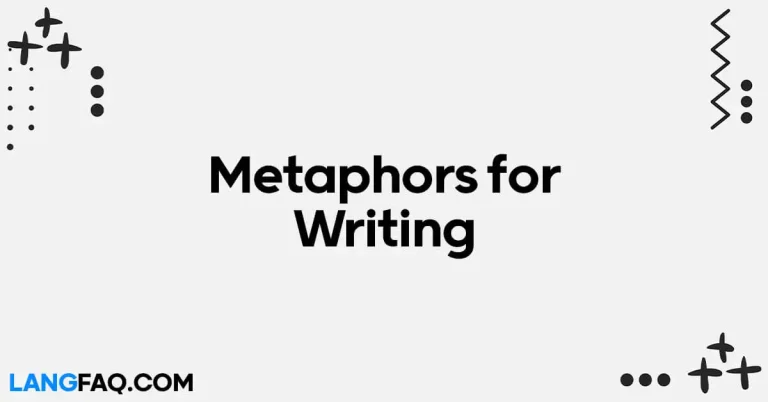
26 Metaphors for Writing: Unleashing the Power of Words
Share this post: Facebook X Pinterest Welcome to the world of writing, where words are the tools of creation and expression. In this article, we’ll embark on a…
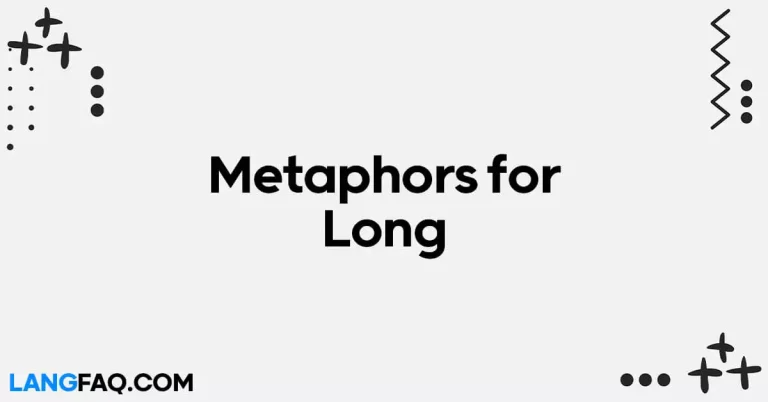
26 Metaphors for Long
Welcome to the fascinating world of linguistic artistry, where words paint pictures, and expressions go beyond the ordinary. In this article, we delve into “26 Metaphors for Long,”…
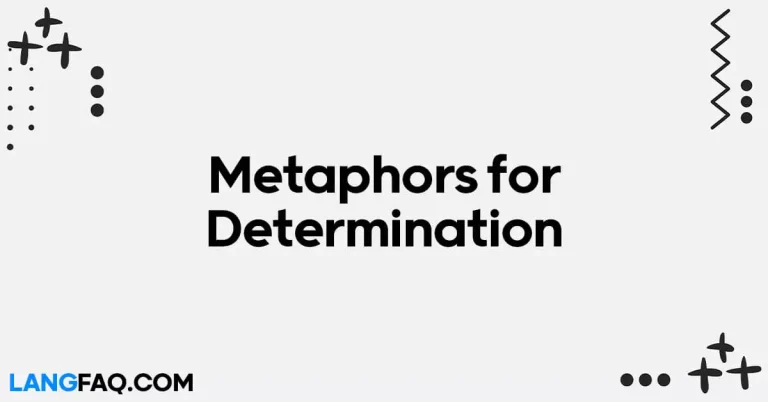
26 Metaphors for Determination: Unveiling the Essence
Embarking on a journey of self-improvement and resilience? Dive into the world of “26 Metaphors for Determination” and discover the profound insights these analogies offer. From relentless storms…

26 Metaphors for the Ocean: Unveiling the Depths of Imagination
The ocean, with its vastness and mystique, has been a perennial source of inspiration for poets, writers, and dreamers throughout history. It’s a canvas upon which the human…
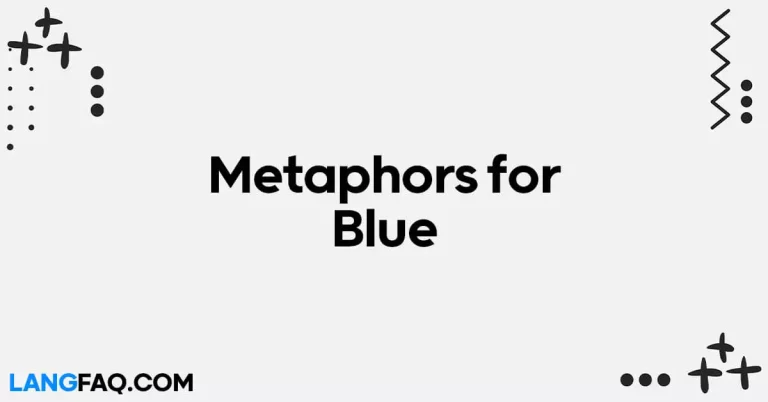
26 Metaphors for Blue: Unveiling the Essence of the Color
Welcome to a journey through the kaleidoscope of blue, where words become brushes and metaphors become strokes, creating a masterpiece of linguistic beauty. In this article, we’ll unravel…
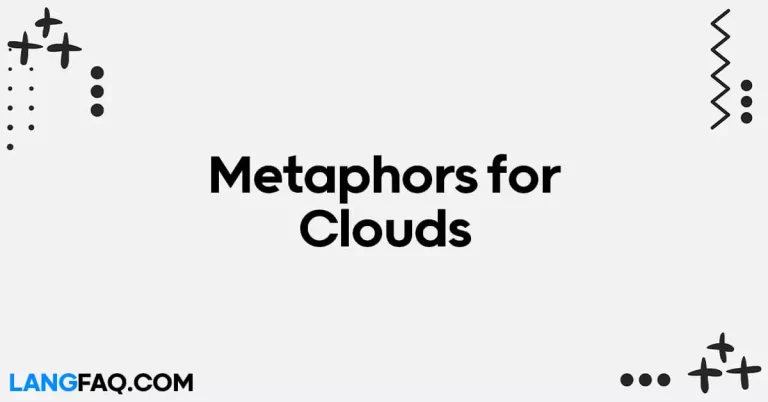
26 Metaphors for Clouds: Unveiling the Poetry of the Skies
Ah, the enchanting allure of the skies! The topic “26 Metaphors for Clouds” invites us to embark on a poetic expedition through the realms of celestial imagery. Join…
The writings of a West Country Dapwearer
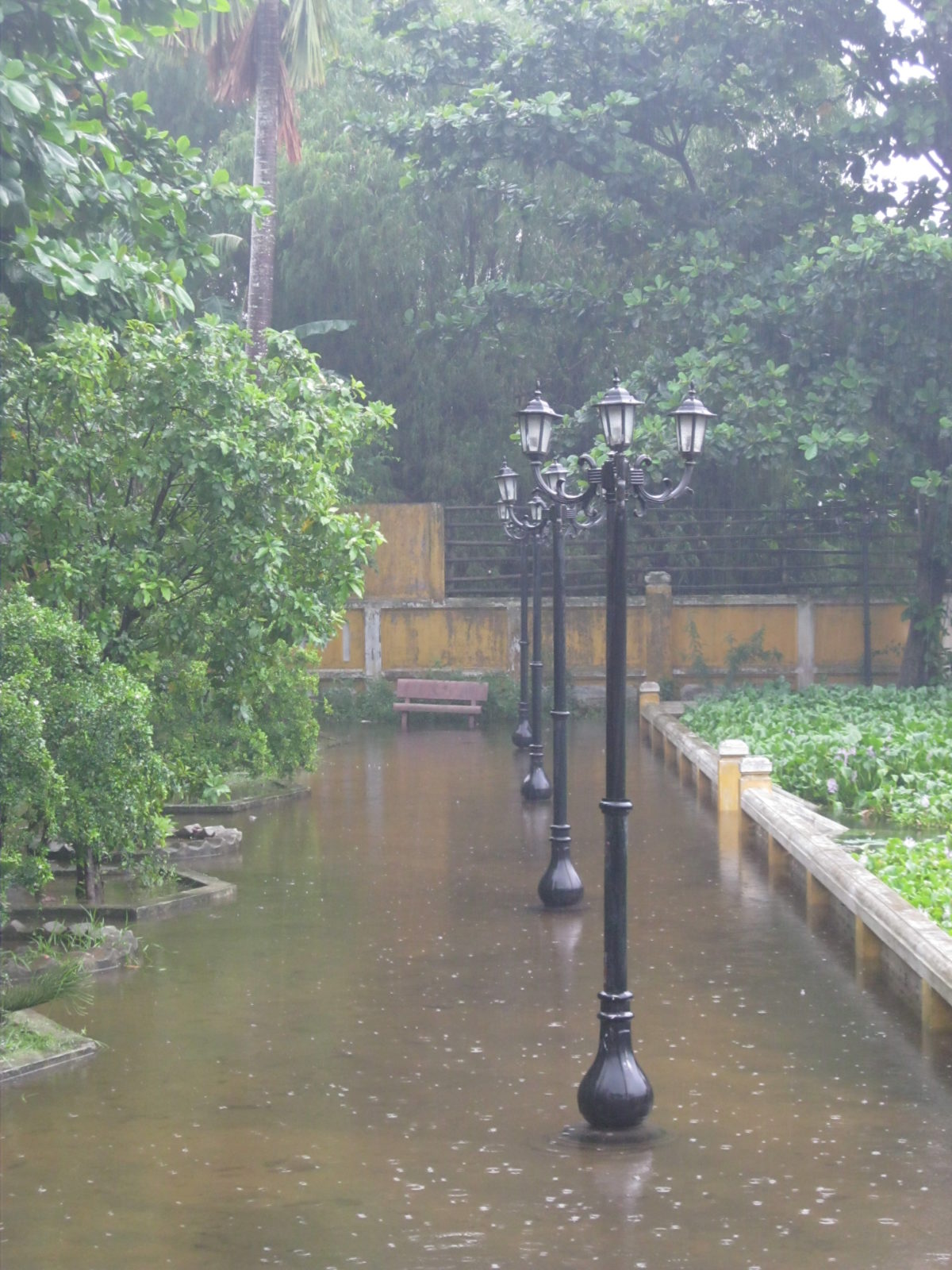
- Creative Writing
What it feels like to me in the rain
The rain drops are not plump, there are just more of them. My mac is wet. My jeans are wet. My bag is wet. My hand that holds my bag is wet. There really is a lot of rain falling from the sky right now.
Sometimes when it rains, I want to strip naked and dance. Peel off my clothes, layer by layer, and just dance. I don’t know how the dance will go: I can’t visualise it. I know that it will be like no dance I have ever performed but when it happens it will be the right dance to dance.
I know that I will shout up at the clouds too. Incite them to do their worst. My nakedness does not care about how much rain falls upon it. My dance encourages it. The rain encourages it.
Other times, the rain makes me sad.
A nostalgic sadness emerges when I realise that I am a person with a past, a present and a future, and that I can never hope to embody the best bit of any of these states at the same time. It is this that makes me ache for it. I realise that I will never be this whole and it makes me sad.
Occasionally, rain makes me feel hopeful. It reminds me that there are beautiful things to see and feel as a human being. When the rain falls from the sky, it somehow passes through my clothes, my skin and connects with the water that makes up the most of me. Drops fall on ordinarily still and even stagnant pools, ripples expand within me and I feel an energy. Molecules shunt, and I know that I am alive.
This rain right now makes me feel nothing. It is rain and it is getting me wet. And I want to be away from it.
Like this, read about the freezing cold of Langmusi, China .

About the author
Tom spooner.
- Ones to Watch
- Photography
- New Zealand
- Flash Fiction
- Short Story

25 of the Best Words and Phrases to Describe Rain
By: Author Hiuyan Lam
Posted on Last updated: October 20, 2023
Categories Vocabulary Boosters
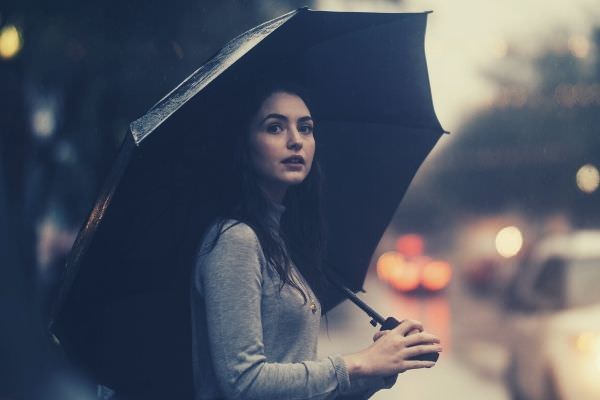
People share different relationships with rain; sometimes, it may be soothing, or it can ruin an entire event that you had planned. In any case, you’ll need words to describe rain to convey your emotions or simply to describe the state of the weather.
The words to describe rain that you use can vary depending on the type of rain, for example if it is light or heavy rain. You can use words to describe the sound of rain as well.
Here are 25 rain-related words that you can add to your vocabulary or your descriptions of rain:
5 words to describe rainy weather
Rainy weather is either welcomed or unwelcomed, depending on the person. Sometimes, it’s the perfect chance to snuggle up with a loved one and watch some movies; other times, it can ruin your plans and make you feel sad or depressed. When you want to talk about the state of the weather, you can use any of these five words to describe rain:

For sound of rain
The sound of rain is comforting to some people, but whenever there is a storm or heavy rain, it can be quite terrifying for others (especially children). Here are five words to describe rain and the sounds it makes on your roof or against the pavement:
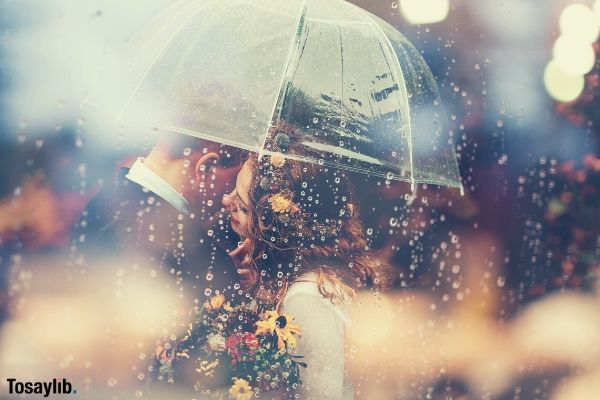
You May Also Like:
25 of the Best Words to Describe Heat and Hot Weather
5 words to describe heavy rain
Heavy rains are the worst, without a doubt. They ruin plans, make people feel uneasy, and can even cause flooding or landslides! These are five words to describe rain that is heavy and terrible:
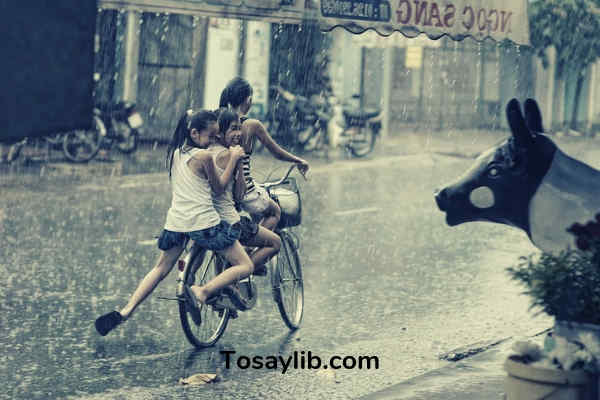
5 words to describe rain shower
Rain showers aren’t the same as other types of rain. They occur in short bursts, and they can be very light or very heavy. Here are five words to describe rain showers:

5 words to describe drizzling rain
Drizzling rain is super light, and sometimes, it takes a while for you to even notice that it’s happening. It’s the type of rain through which you can walk, getting soaked very slowly. It barely has a noticeable impact. It usually ends quickly, or it is followed by very heavy rainfall.
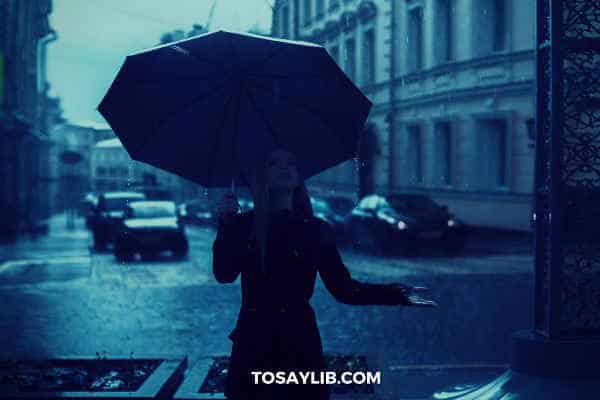
25+ of the Best Words to Describe Your Mood Accurately
Do you want the rain to stay? Or, do you want it to go away and come back another day? Now, you have the perfect words to describe rain to use to convey your feelings about the different types of rain that you can experience throughout the year.
- AI Content Shield
- AI KW Research
- AI Assistant
- SEO Optimizer
- AI KW Clustering
- Customer reviews
- The NLO Revolution
- Press Center
- Help Center
- Content Resources
- Facebook Group
The Ultimate Adjective List to Describe Rain
Table of Contents
Not everybody loves the rain. For some people, the rain can be a calming, soothing sound. While for others, the rain is just a nuisance that keeps them from doing the things they enjoy. No matter how you feel about the rain, we’ve got a ton of adjectives to describe rain that you can use in your sentences.
You can use these words to describe how you feel about the weather. Or you can also use them to describe rain’s intensity, sound, or appearance. Get ready to add some fresh new words to your vocabulary.
Let’s get right into it!

The Importance of Using Adjectives
Adjectives are words that help to describe a noun or pronoun . Some adjectives describe the noun’s quality or condition, while others express their quantity or magnitude.
You can use adjectives to describe anything, from places, events, objects, people, and even the weather.
Without adjectives, it will be impossible to convey the intensity of any type of feelings or emotions. That’s why they play a crucial role in sentences. You can use multiple adjectives in your sentence to add more detail to your text or increase a particular subject’s general effect.
Adjectives to Describe Rain
Negative adjectives for rain.
If you’re not a fan of the rain, you may feel sad or down because of the weather. In these instances, you can use these adjectives to help better express how the weather feels.
A situation that causes depression or sadness is called a dismal situation. Weather conditions like rainy weather can make some people sad, discouraged, and moody. It can ruin their overall mood.
This word is perfect for when you feel particularly down or if you have to change plans thanks to the rain.
Example: The dismal rain ruined my picnic plans.
During gloomy weather, the sky may become dark and gray even during the day. It can cause easily ruin your mood.
Example: It’s only 9 in the morning, but this gloomy weather makes me want to curl back up in bed.
You can describe unpleasantly warm and humid weather as muggy. It’s common to be hot and sweaty during a muggy day. This feeling is because of the warm outside temperature and the pouring rain.
Example: I’m not too fond of muggy weather. It wrecks my hair!
Positive Adjectives for Describing Rain
Rain can be a source of comfort and relief to some people. If you’re one of them, here are some positive adjectives you can use.
Misty rain is when fog forms and the visibility is poor for drivers. This can occur anytime during the day and makes driving very difficult.
It can also be a bit cold during this time, making it a nice time for movie night and hot cocoa.
Example: All I want to do is watch TV and eat pizza during this misty weather.
The best type of rain is soothing, which will help you fall asleep. With the softness of the rain, you can snuggle up under a blanket and feel calm. Rain of this kind is light and does not make hard pounding or pattering sounds on the roof.
Example: The sound of the rain was so soothing it helped put me to sleep.
Light rain will only feel like a sprinkle. It may only form a few spots of water on your window or the pavement.
Example: The light rain feels refreshing.
Words Describing the Sound of Rain
The sound of rain is another great way to describe it. It can give you a good sense of how strong it is.
Gentle rain is characterized by weak rainfall and patter of raindrops. The rain falls softly and soothingly, giving a gentle tapping sensation.
Example: I barely even heard the gentle rain this morning.
Pattering rain represents light, repeated tapping sounds against a surface, such as a roof, window, porch, or pavement. Light to moderate rainfall is also associated with this word.
Example: The pattering rain sounds against my window are so relaxing to hear.
Rain may sometimes sound like it’s pounding against your roof. This happens when there’s a significantly strong typhoon or hurricane.
Example: We were awakened by the pounding rain and wind last night.
Adjectives to Describe the Intensity of Rain
The intensity of rain can range from a slight drizzle to a full-on hurricane. Here are some adjectives that can help you express how strong the rainfall is.
Excessive rainfall lasts a long time and doesn’t seem to let up. Puddles and mini ponds can begin to form in the streets when the rainfall is so heavy. It can even cause floods.
Example: The rain was so excessive that it forced people to evacuate because of fears of flash flooding.
Pouring rain is a bit similar to excessive rain in the sense that it’s characterized by substantial rainfall. When it’s pouring rain, you may find it hard to walk around outside, even with an umbrella.
Example: We were all stranded at the train station because of the pouring rain.
Heavy rain can be described as strong when you can feel it heavily on the roof. This can also be accompanied by strong winds similar to a storm. Example: The rain was so strong that it ruined several rice fields.
Violent rain causes damage to buildings and other infrastructures. This usually occurs when there are intense hurricanes. Many people feel unsafe due to the risks from a violent rain’s impact on hazard-prone areas.
Example: Several houses were damaged when violent rain swept through the area.
Other Adjectives Related to Rain
The word overcast is usually characterized by gray and dull clouds. This is typically a sign of incoming rain.
Example: It’s a chilly and overcast day. It may not be a good day to go to the beach.
Tepid relates to the weather being in the middle of the scale below warm and above cool. The rain often has a damp and cold feel to it. It is likely to be as warm as the weather during hot summers.
Example: I didn’t even need a raincoat in this tepid rain.
Sudden rainfall is short, no more than a few minutes, and tends to be intense. It has no warning signs like a cold breeze, dark clouds, and so on.
Example: The sudden rain caught us off guard, with no place to run.
Final Words
You can describe rain in many ways. It can be through its sound, intensity, and so on. And now that you’ve gotten to know some new adjectives to describe rain, you can create a better and more vivid sentence !

Abir Ghenaiet
Abir is a data analyst and researcher. Among her interests are artificial intelligence, machine learning, and natural language processing. As a humanitarian and educator, she actively supports women in tech and promotes diversity.
Explore All Add Strong Adjectives Articles
Comprehensive adjective list to describe a day.
“How was your day?” you’ve probably been asked this question dozens of times. And it can be hard to find…
- Add Strong Adjectives
The Best Adjectives to Describe a Hardworking Person
Indeed, there are words that people use to cheer someone up. If you are trying to boost the confidence of…
The Best Descriptive Words for Emotions
Do you want to describe you what you feel through the exact words? Are you eager to let other people…
An Lesson Guide About Descriptive and Limiting Adjectives
Whenever you write an article or essay, adjectives will never disappear from your text. You will always use descriptive and…
Colorful Adjective Examples Worth Considering
The English dictionary is one of the most reliable writing guides, consisting of various words used to describe the shade…
Learn the Best Adjectives to Describe Things
Are you thinking of the best words to use when trying to distinguish the characteristics of one noun from another?…
Get the Reddit app
Discussions about the writing craft.
How do you include weather descriptions in your writing without sounding like "It was a dark and rainy night"?
I already had written a scene down, however, I want to add an extra part to it that placed it when rain has fallen already.
As a writer yourself, how would u do this?
Edit 1: thank you for all the responses, I'll post again when the book has gotten out you'll be the first to read it :)
Edit 2: Thank you. I do not need help as I've completed that part of the process :) .

IMAGES
VIDEO
COMMENTS
Select the Right Words. Use descriptive adjectives, adverbs, and verbs to convey the characteristics of the rain. Choose words that evoke the senses. For instance, you can use words like "gentle," "drizzling," "torrential," "pattering," "incessant," or "misty" to describe the rain.
Find simple and creative ways to describe rain and other weather conditions in your writing. This web page offers a comprehensive list of adjectives, nouns, and phrases for hot, cold, windy, rainy, and more weather scenarios.
Rain can bring a sense of renewal, growth, and life to the world. There is a cosy feeling of being inside looking out at the rain, safe and warm. Rain can make everything glisten and gleam in the light, looking fresh and new. Show the soothing, hypnotic quality of the rhythmic patter of raindrops. Rain can be invigorating, energising, and joyful.
DESCRIBING THE RAIN ... This will vary your writing style. LEVEL 2 I quickened my pace as the clouds began to gather in the sky. Up to now, the sky had been ... The metaphors should be more creative and the turn of phrase made more enriching. LEVEL 4 'The sun enables life. The rain grants it safe passage'.
Learn how to describe rain in creative writing with descriptive words and idioms for light, heavy, and persistent rain. Find out the technical term for the smell of rain and other ways to express rainy weather.
The last rays of sun skimmed the surface. late afternoon sun. velvety darkness. night shattered like a mirror. the Southern Cross lying on its side, the green meadow bathed in the humid light of the sinking sun. full dusk. The corners have just about disappeared into the shadows. Night.
The rain has a unique ability to transform the landscape of our writing, infusing it with a sense of depth and emotion that is unparalleled. As writers, we often find ourselves drawn to the rhythmic patter of raindrops against the window, seeking inspiration in its soothing cadence. The influence of rain on artistic output and creativity has ...
The fine rain, the gentle rain, poured equally over the mitred and the bareheaded with an impartiality which suggested that the god of rain, if there were a god, was thinking Let it not be restricted to the very wise, the very great, but let all breathing kind, the munchers and chewers, the ignorant, the unhappy, those who toil in the furnace ...
By Derek Haines / October 23, 2023 / Writing. When you describe the weather in writing, you set the scene for your story or a part of your story. It's an opportunity to show readers the setting rather than tell them about the weather using a couple of quick adjectives. Using highly descriptive or figurative language and a variety of grammar ...
Weather is a tool to evoke mood, guiding the character toward the emotions we want them to feel, and by extension, the reader as well. By tuning into specific weather conditions, a character may feel safe, or off balance. Weather can work for or against the character, creating conflict, tension, and be used to foreshadow, hinting that something ...
Weather as Setting. When it comes to creative writing, the weather is a crucial part of the setting. It plays a big role in allowing the reader to immerse themselves into the world you are creating. For example, imagine that a town was described by a character as "wet and dreary 365 days a year.". Now imagine that the writer only gave ...
Words To Describe Wet & Cloudy Weather. bank - a large mass of cloud or fog. billow - a cloud that rises and moves in a large mass. blizzard - a snowstorm with very strong winds. cirrocumulus - small round clouds that form lines high in the sky. cirrostratus - a thin layer of cloud found very high in the sky.
A: Weather writing prompts encourage the development of descriptive skills, enhance the ability to evoke emotions, and foster creativity. By incorporating weather elements into your narratives, you can engage readers on a sensory level and create a more immersive storytelling experience.
2. For each weather type, imagine how the sky, sun, clouds and other weather elements look like. Describe each element in simple, readable English. Example: Weather Type: BRIGHT AND SUNNY. Describe the sun: - shines brilliantly - bright - like a fire ball. Describe the sky: - clear, blue sky. Describe the clouds: - white, fluffy ...
So in this section, I've provided some descriptive writing examples from some bestselling books that make great use of the 5 senses. "The tearing of flesh, as though a butcher were yanking meat from a flank. The bubbling of liquids and the soft rasping of the cutting tools.". Tooth & Nail, Ian Rankin.
The following 10 words to describe rain ending -ing might be useful to you. 1. Drizzling Definition. Hazing, sprinkling; light rain falling in fine drops. Examples "The drizzling rain pattered softly against the windowpane." "She walked through the park, enjoying the drizzling rain against her skin." How it Adds Description
Here, using the cliché is needed to show how desperate the character is to start a conversation. 2. Weather As A Backdrop. The most common use of the weather in fiction is as an inconspicuous element of the setting in sentences like this one: Example: On a sunny day, Jane went to the public library.
Vivid Verbs. Because bad weather can often get out of control, describing a storm is not the time to skimp on verb usage. Weak verbs, such as "was" or "were," drain your descriptions of energy rather than infuse them with detail. Using specific, active verbs for the storm's motion gives readers a more detailed image of the story's events.
Imagine the effect of the rain on the trees and include more detail on the sky and clouds. At the end of the paragraph, try to write something about the sun coming out. This will vary your writing style. LEVEL 2. I quickened my pace as the clouds began to gather in the sky.
Rain symbolizing sadness. "The sky's tears fell as she grieved.". A Blanket of Snow. Snowfall as a cozy covering. "The town was covered in a blanket of snow.". The Roar of Thunder. Thunderstorms as nature's orchestra. "The roar of thunder shook the entire house.". The Whispering Wind.
What it feels like to me in the rain. The rain drops are not plump, there are just more of them. My mac is wet. My jeans are wet. My bag is wet. My hand that holds my bag is wet. There really is a lot of rain falling from the sky right now. Sometimes when it rains, I want to strip naked and dance.
08Pounding Pounding rain is not so light or comforting. This word is associated with heavy rains that you can hear clearly. These sounds may be due to a storm or hurricane; they can be louder than the sounds of your television or music. "The pounding rain on the roof makes it sound like the roof is about to cave in.".
With the softness of the rain, you can snuggle up under a blanket and feel calm. Rain of this kind is light and does not make hard pounding or pattering sounds on the roof. Example: The sound of the rain was so soothing it helped put me to sleep. Light. Light rain will only feel like a sprinkle.
I'd describe the humid feeling of post-rain in the air or noticeable, still puddles, wet mud, dripping rooves. Describe the things that are left after a rainstorm. ... I'm writing a shameless, cliched, tropey and campy novel, and fully embracing everything that's supposed to be ruining literature today.